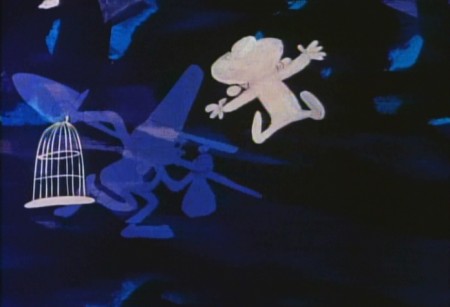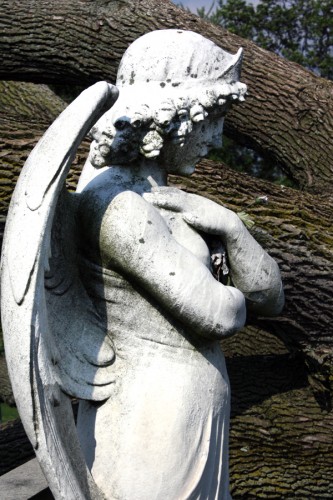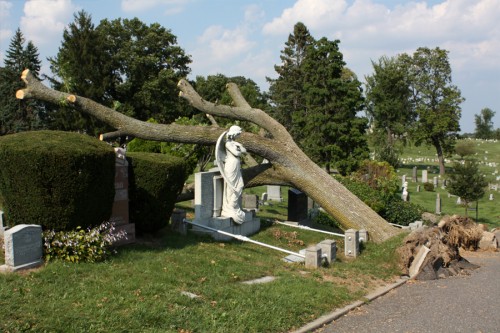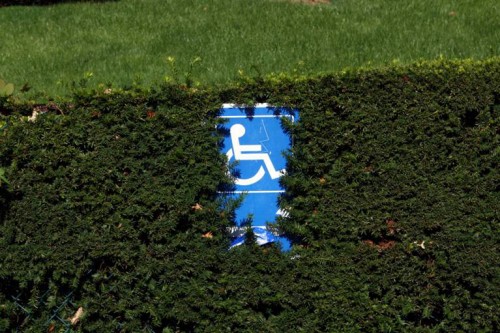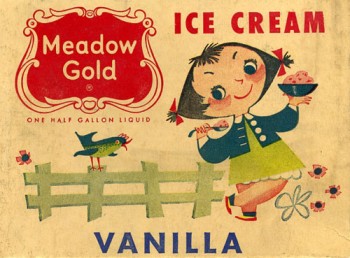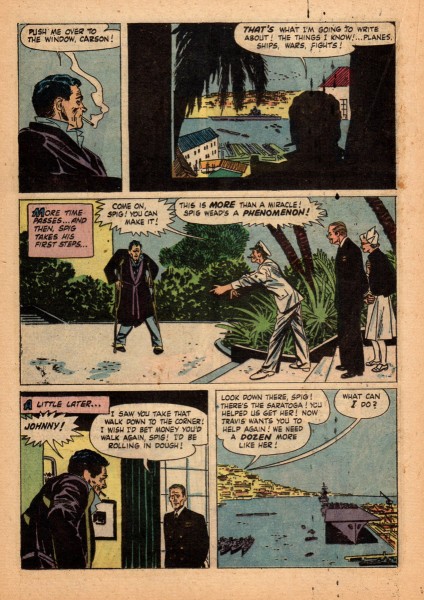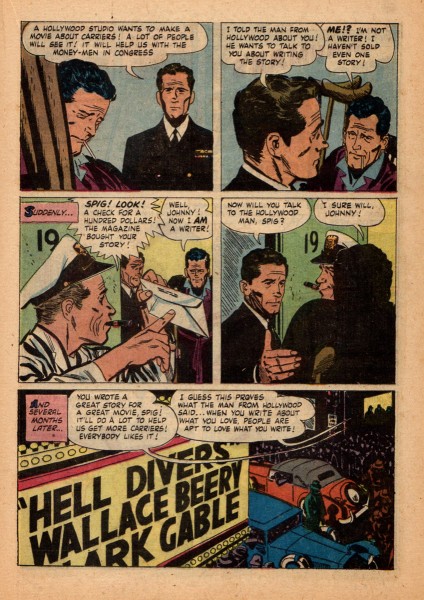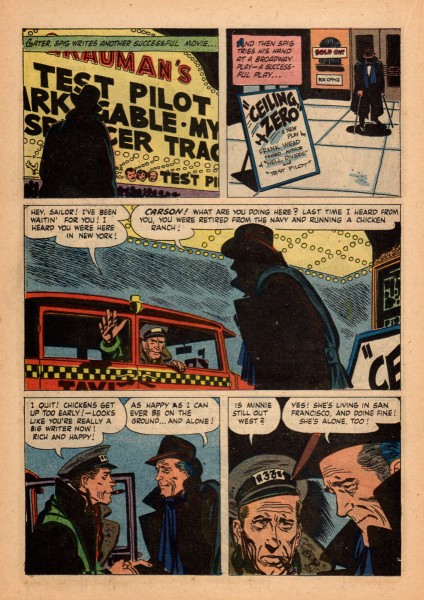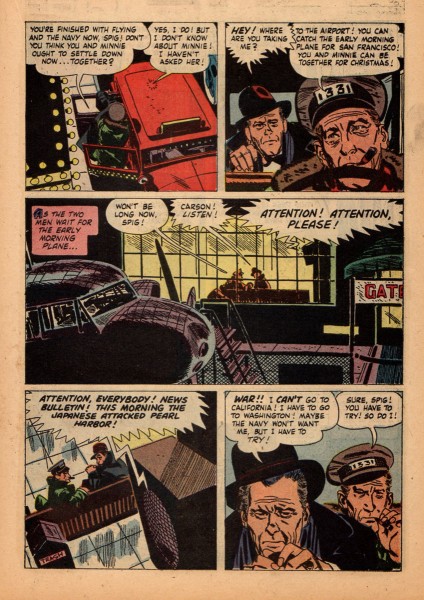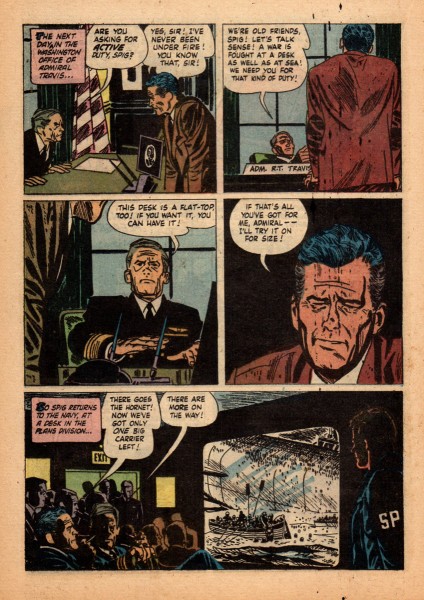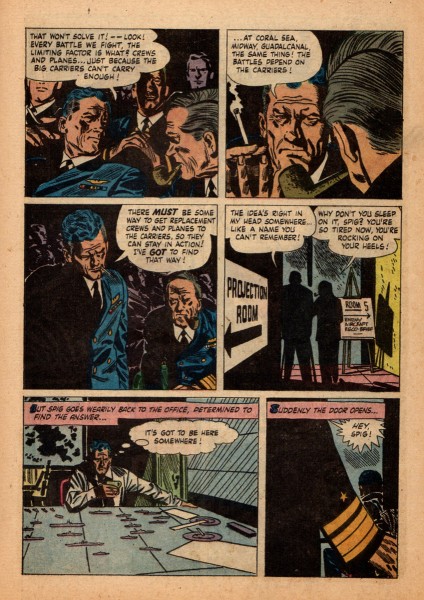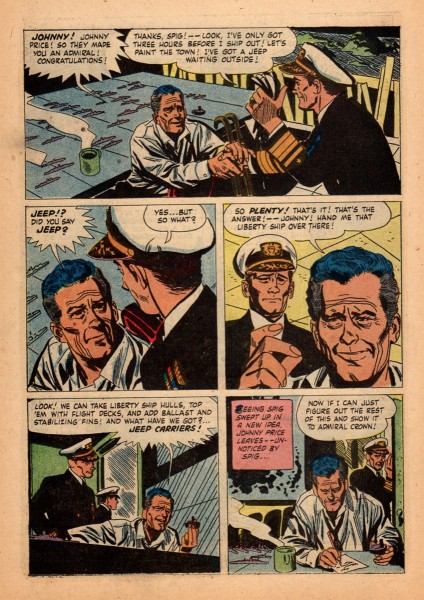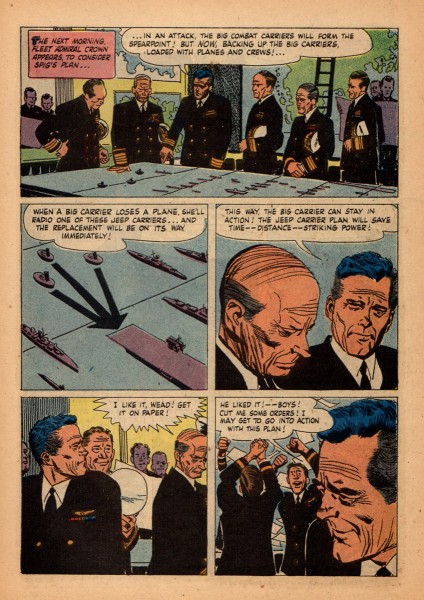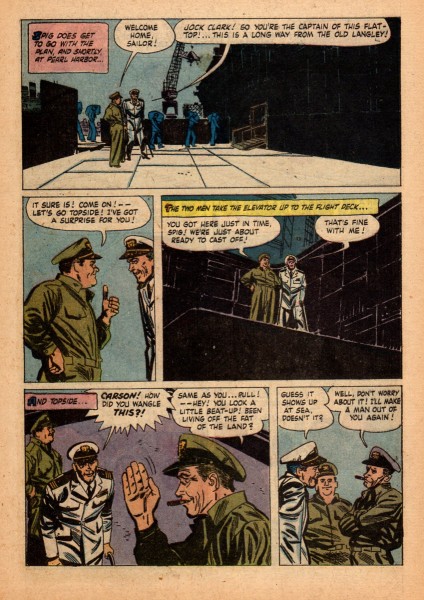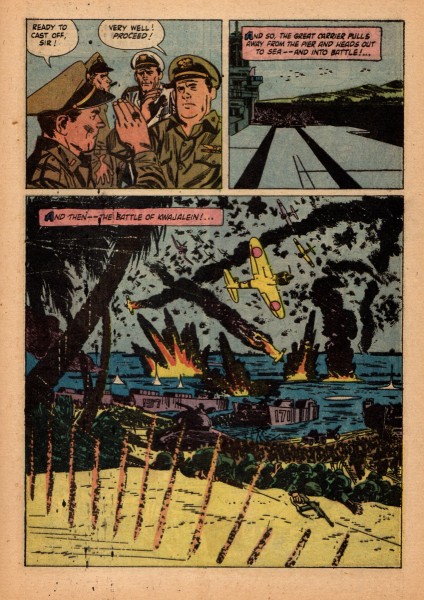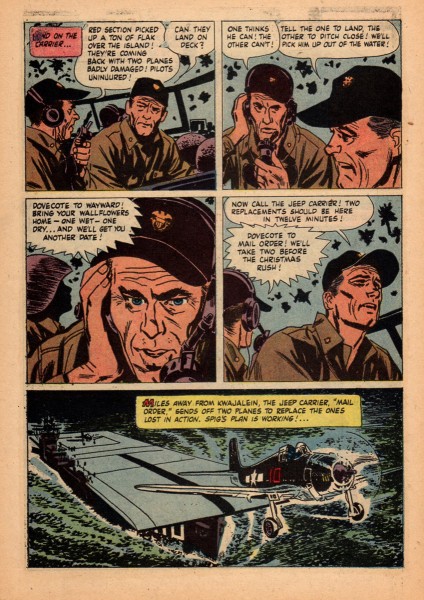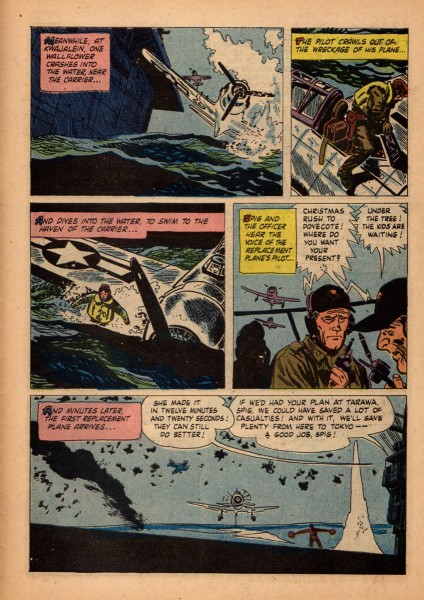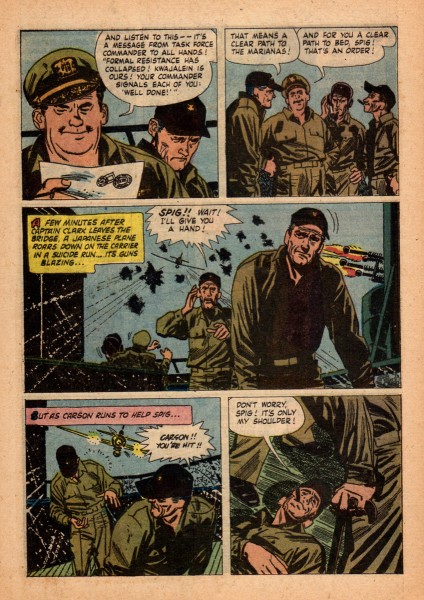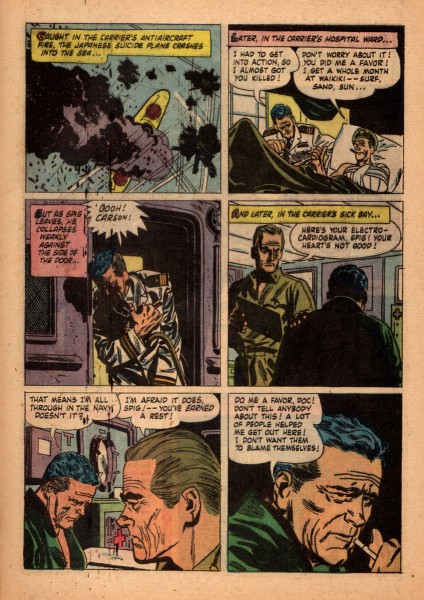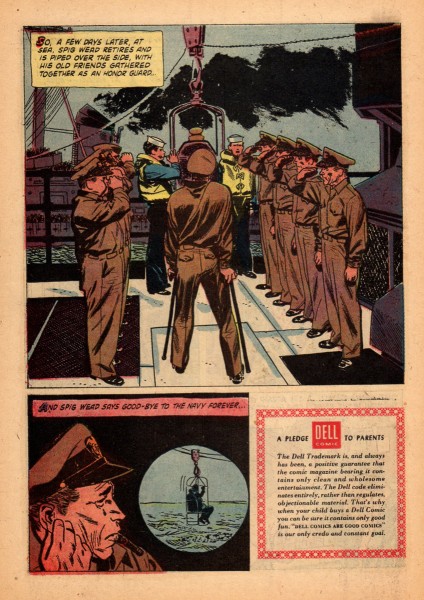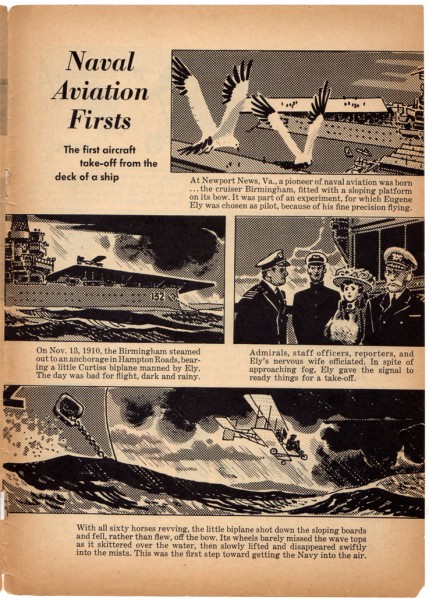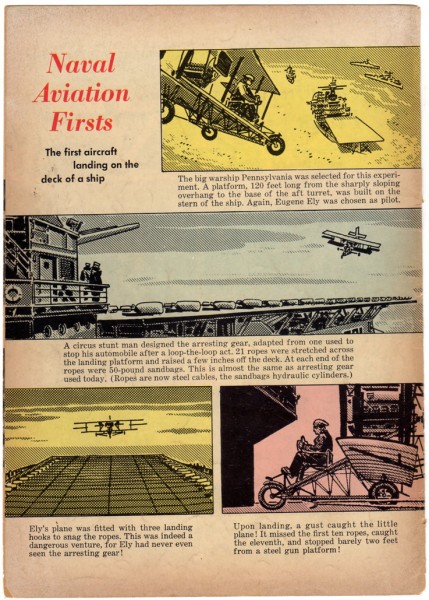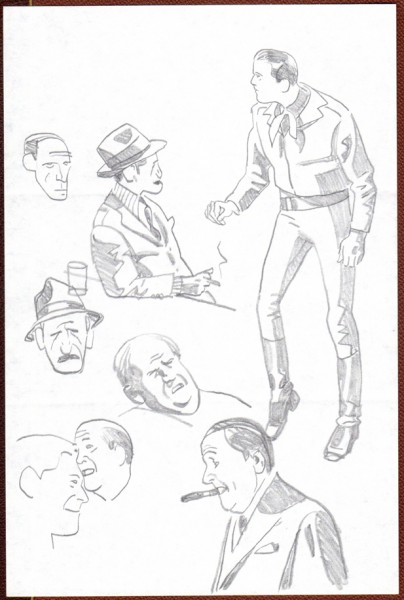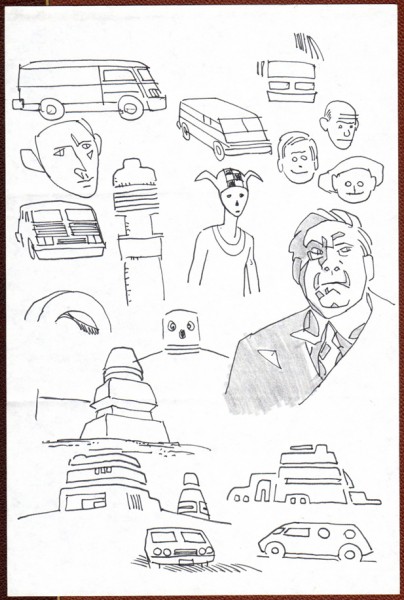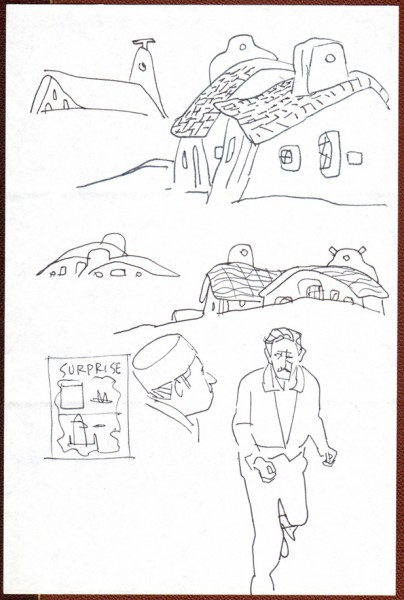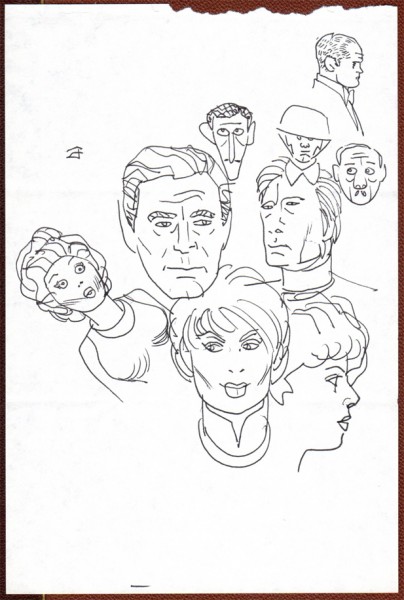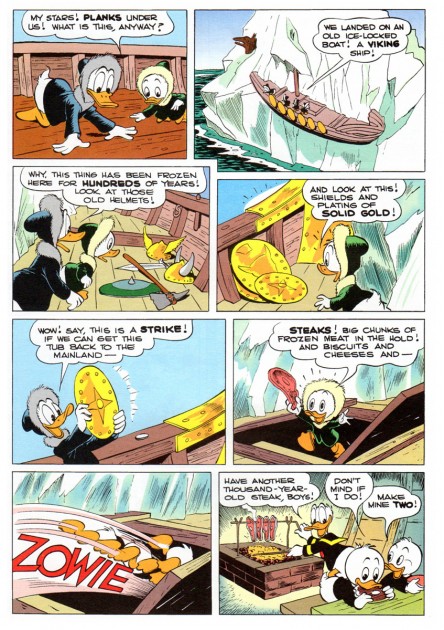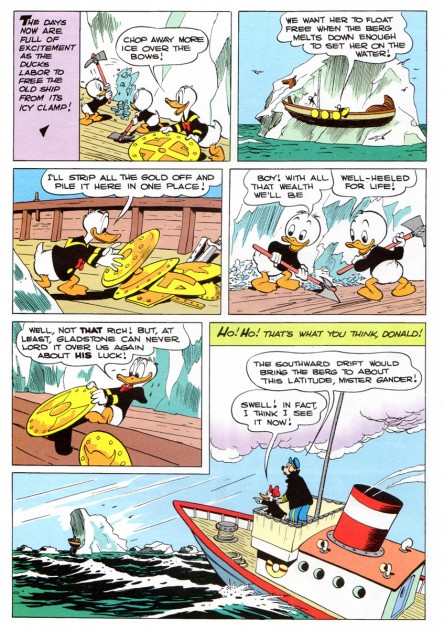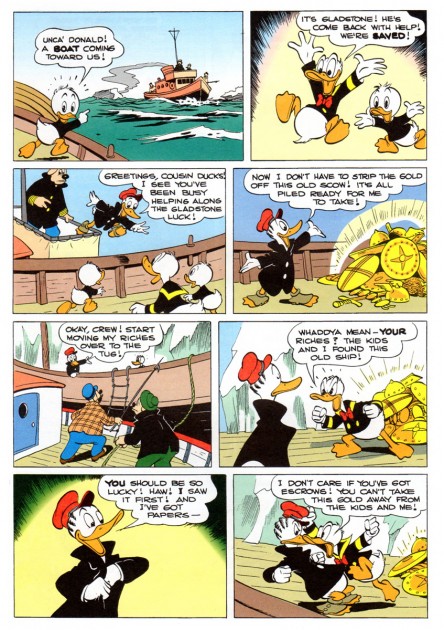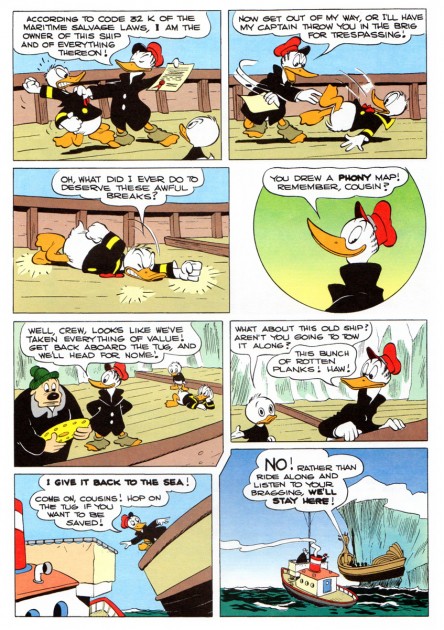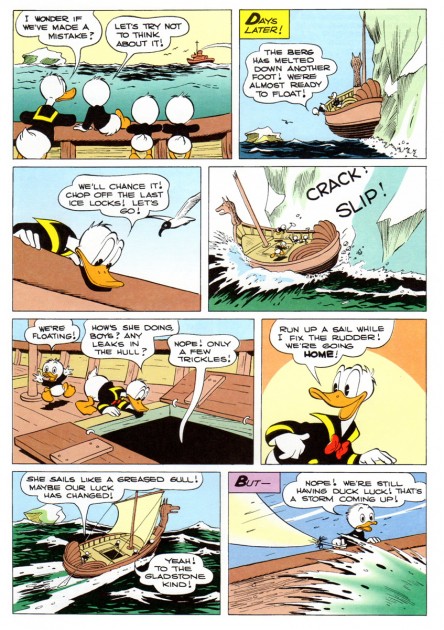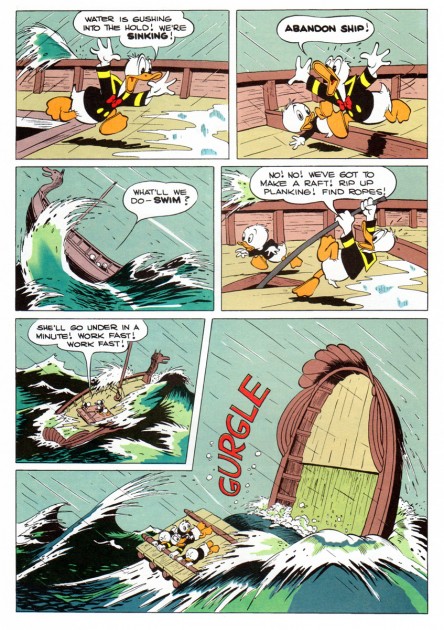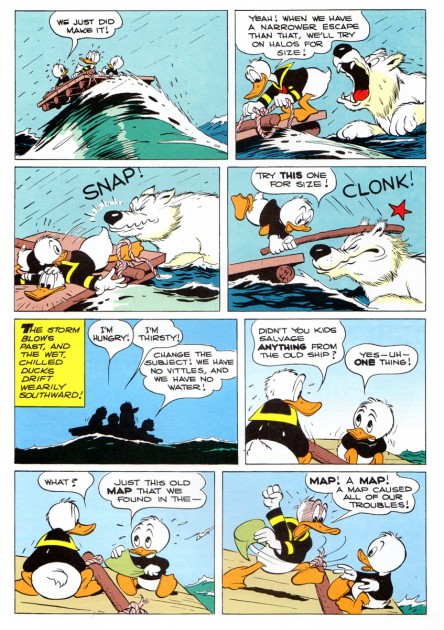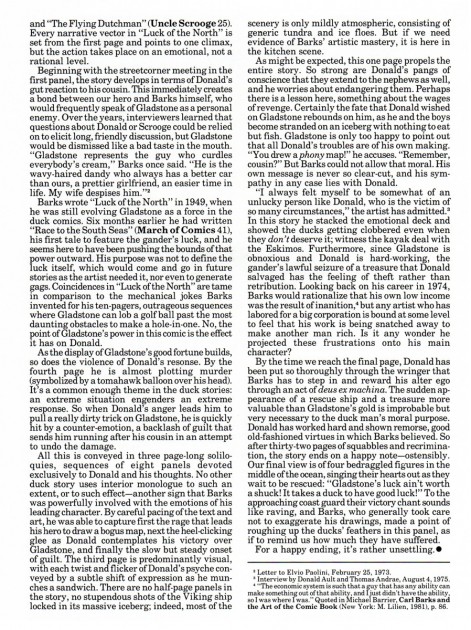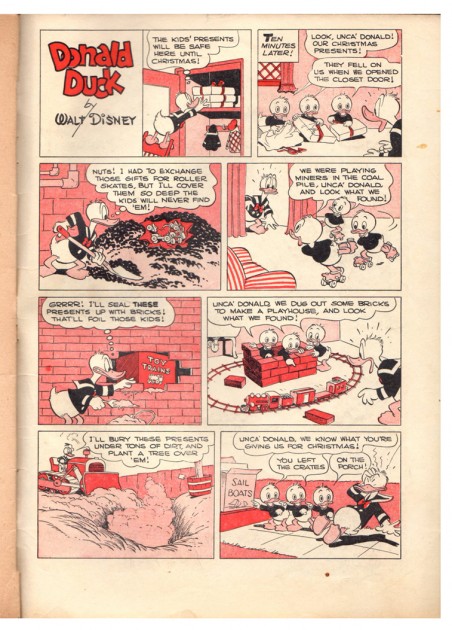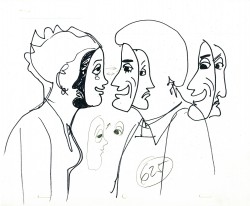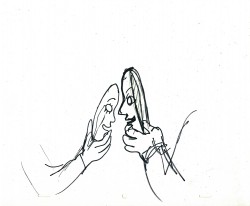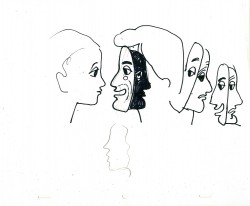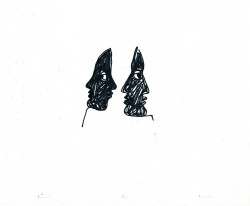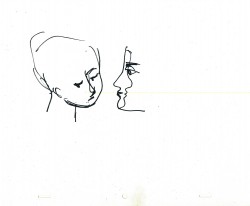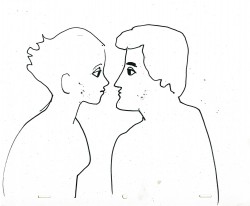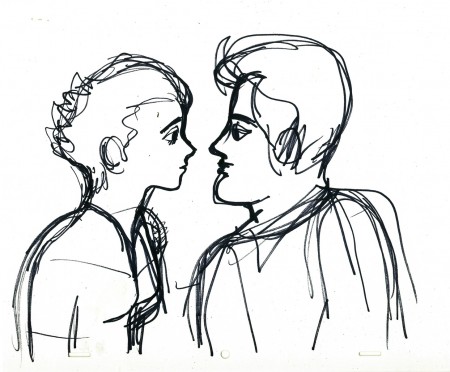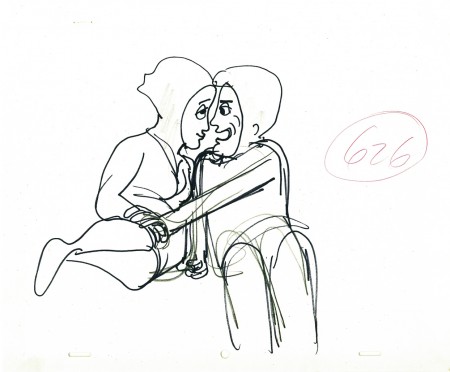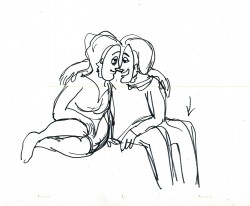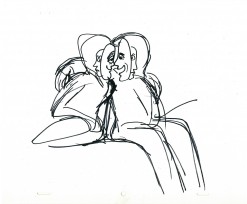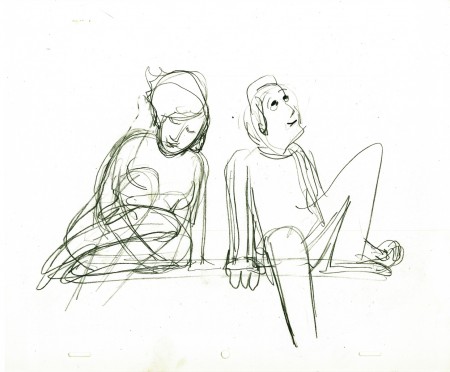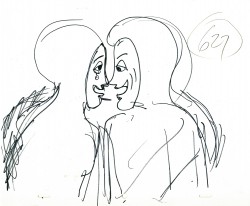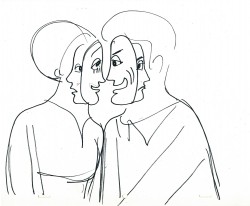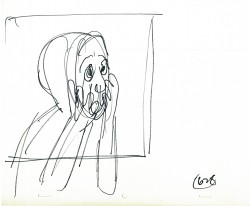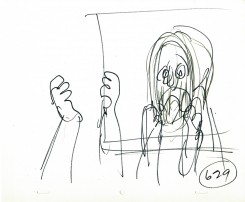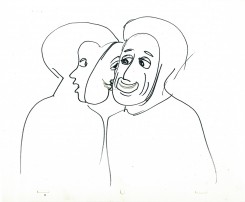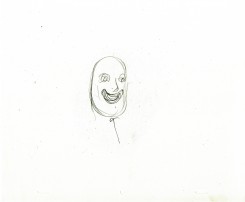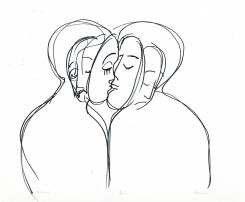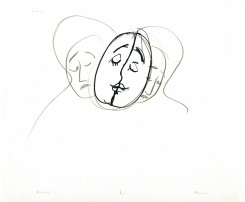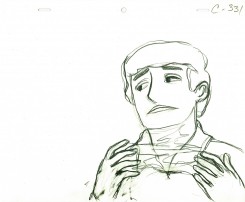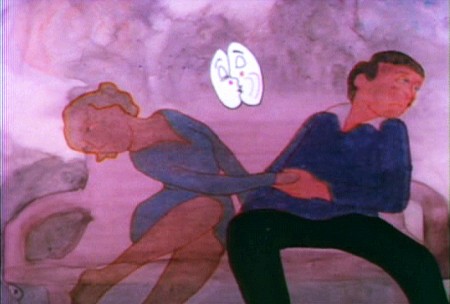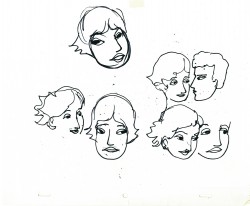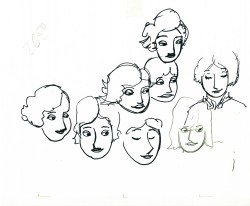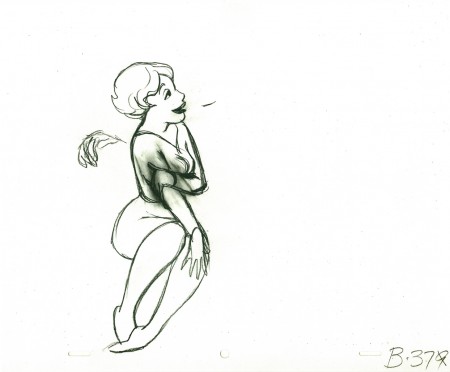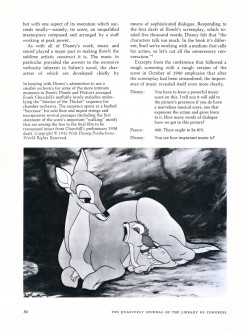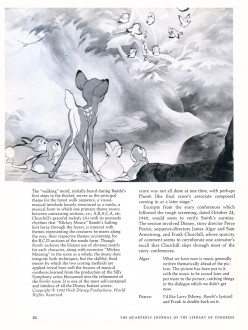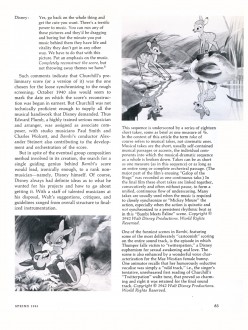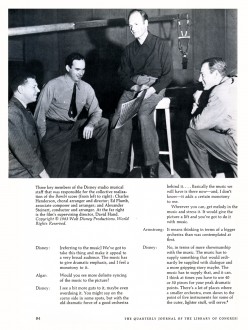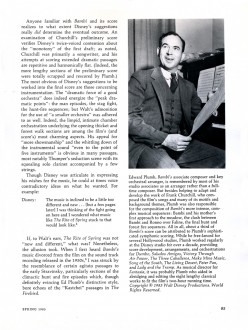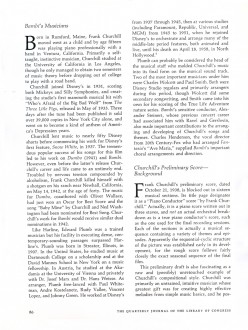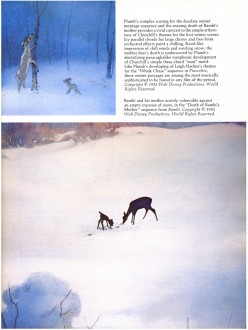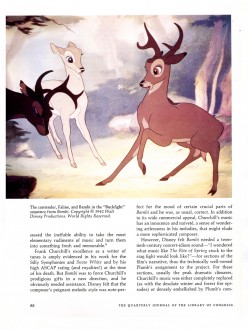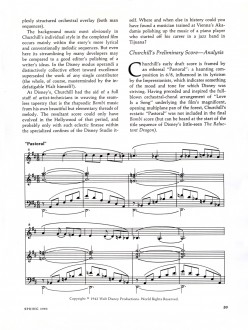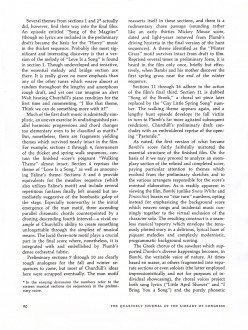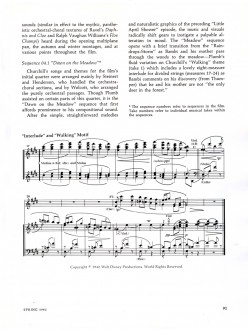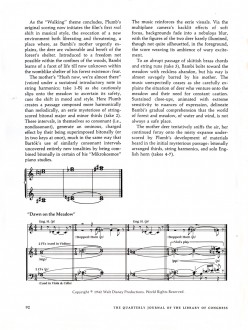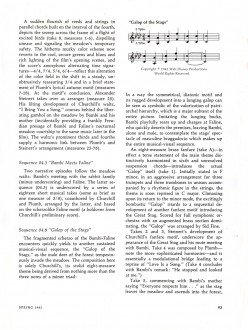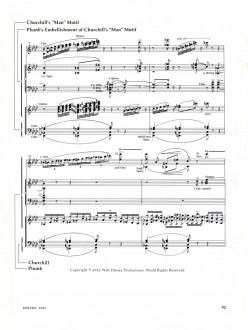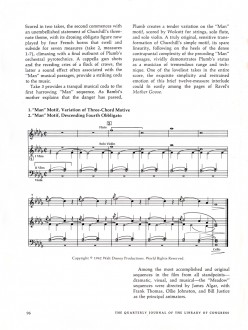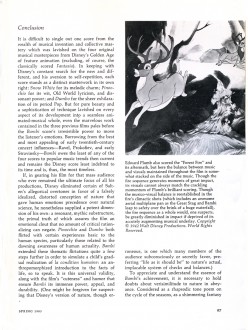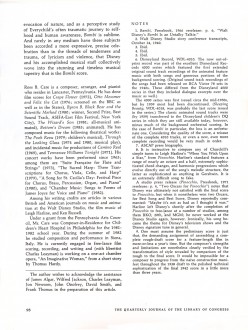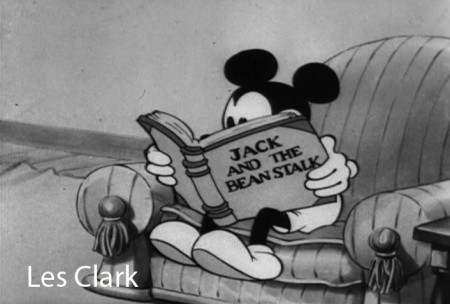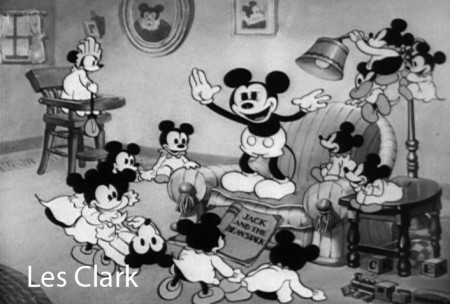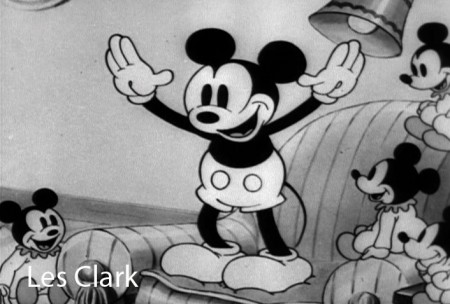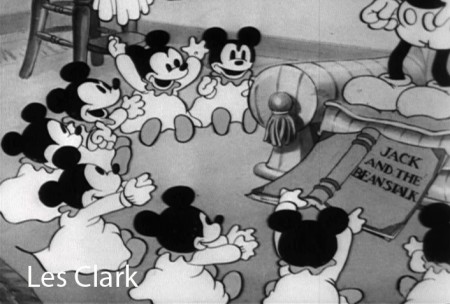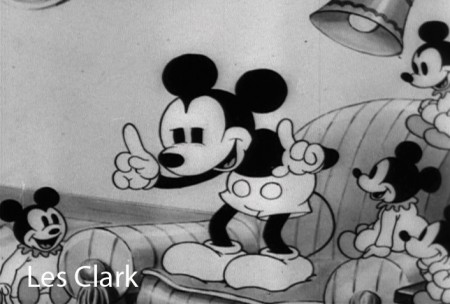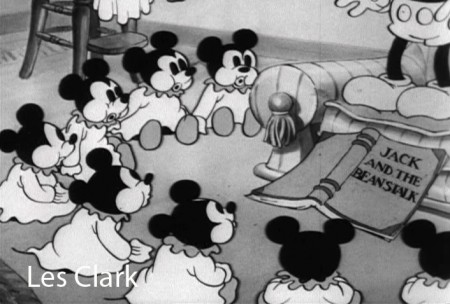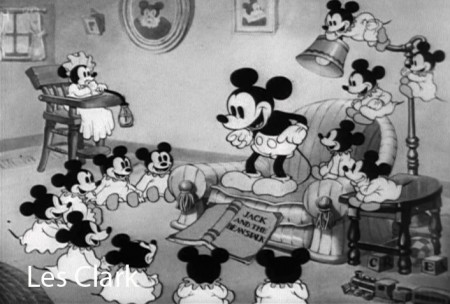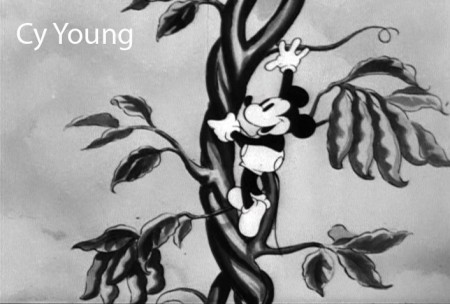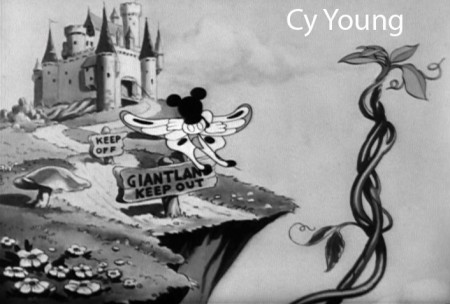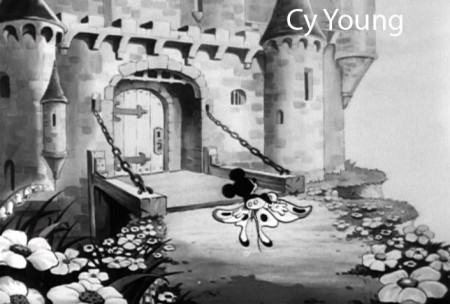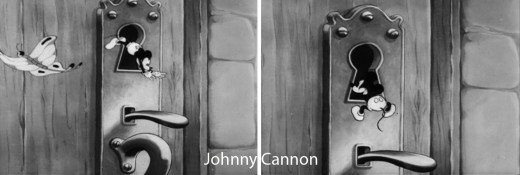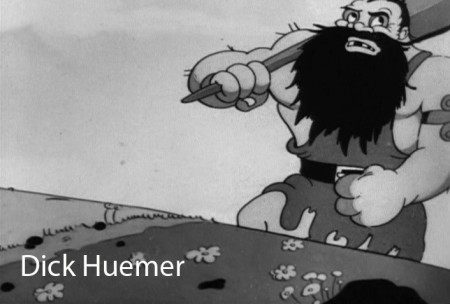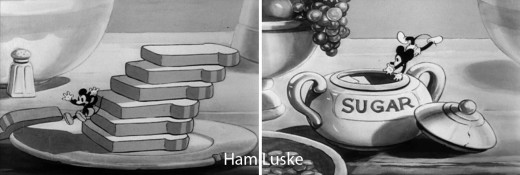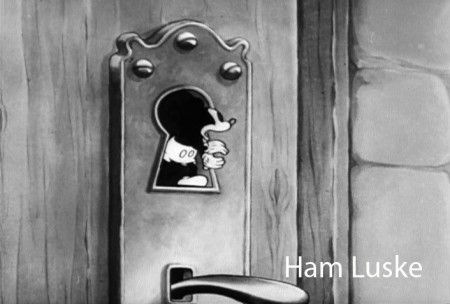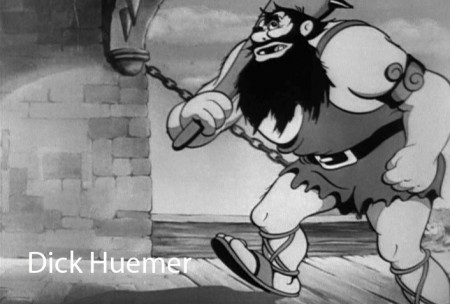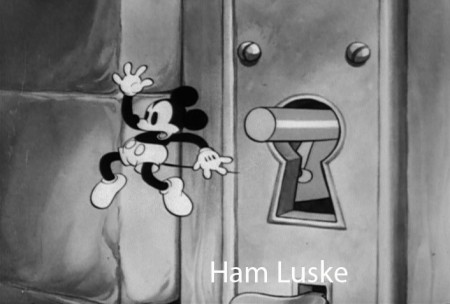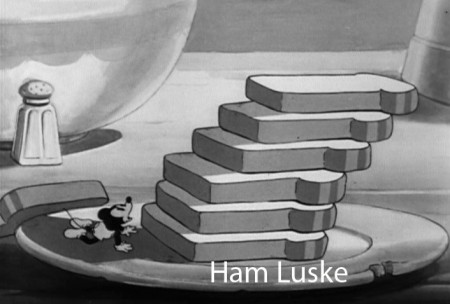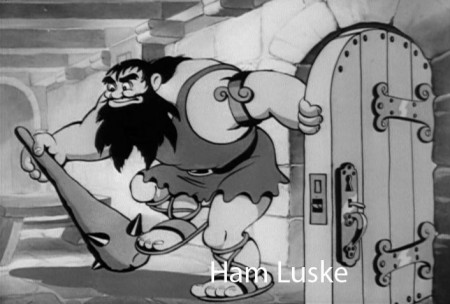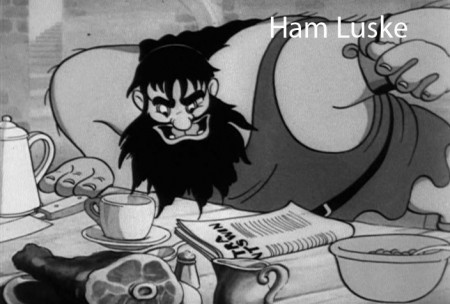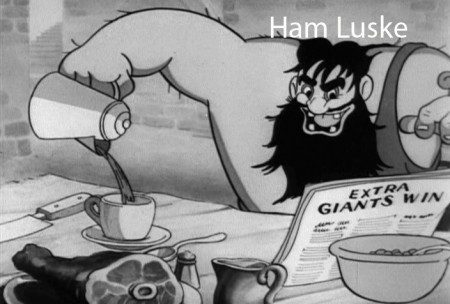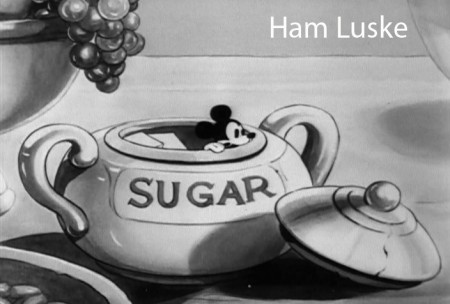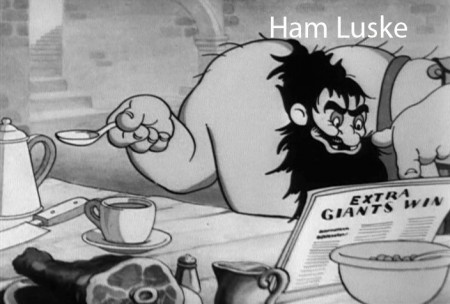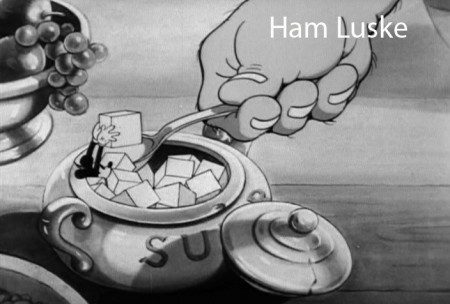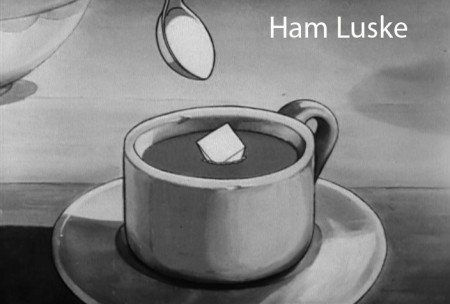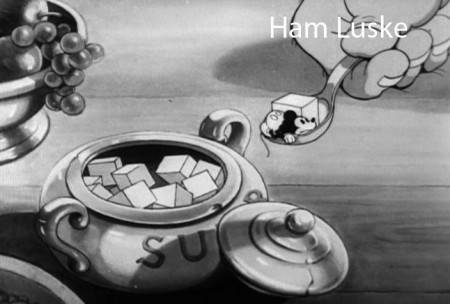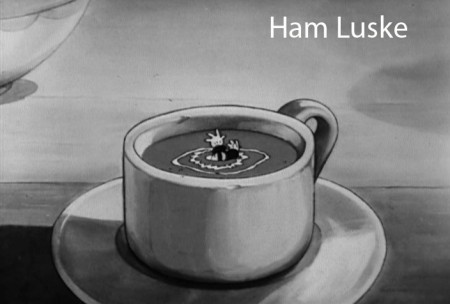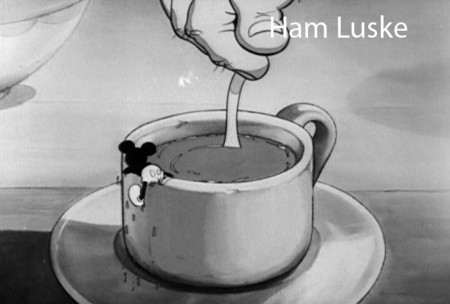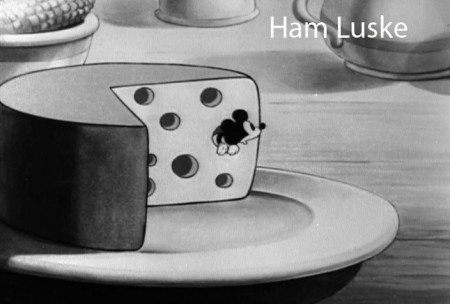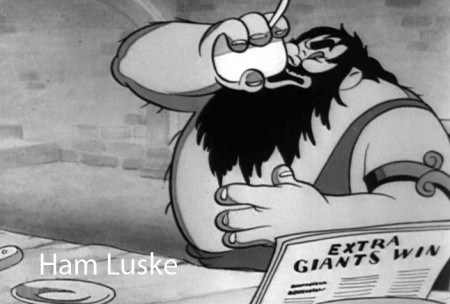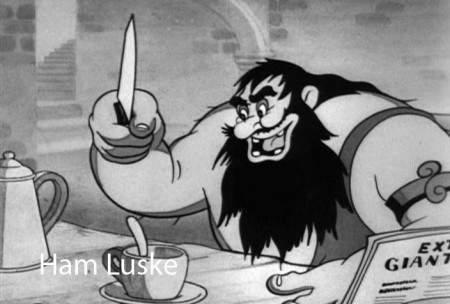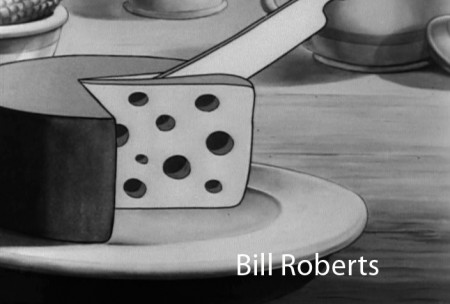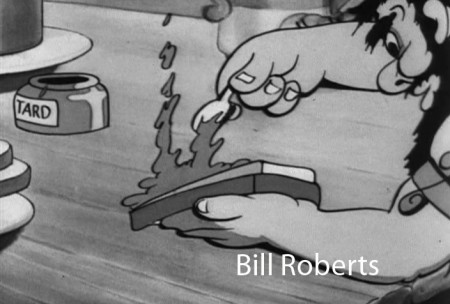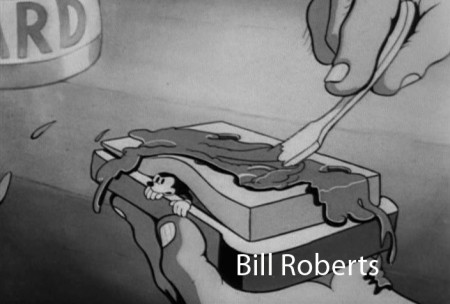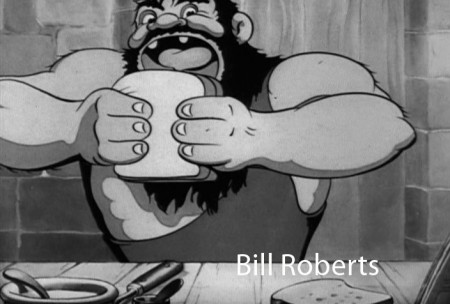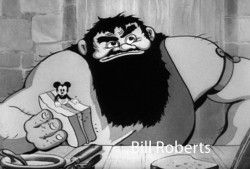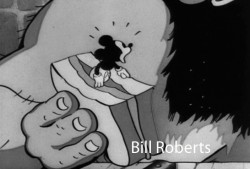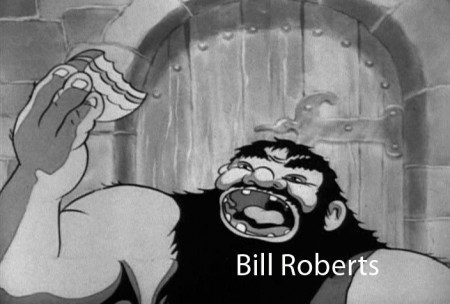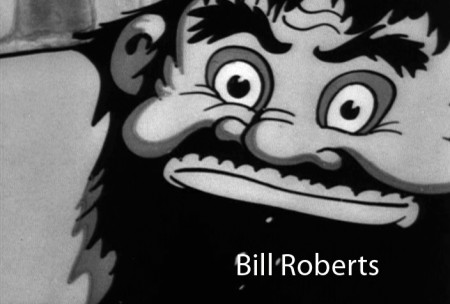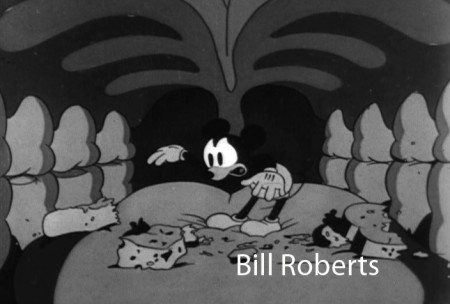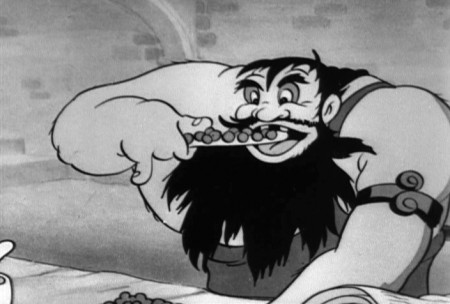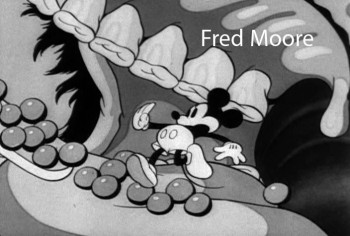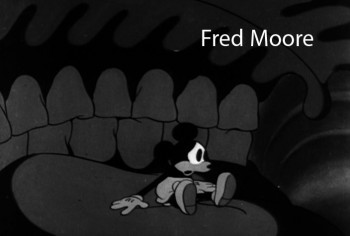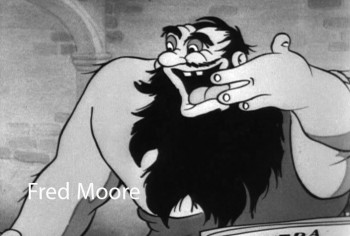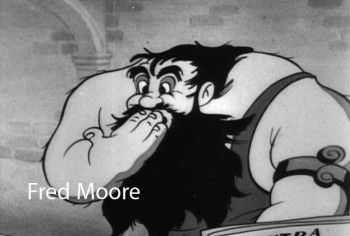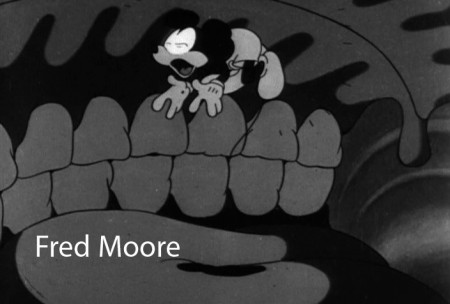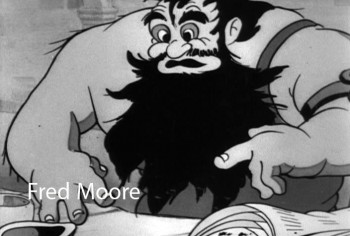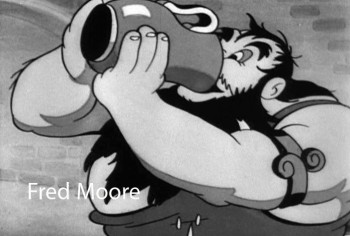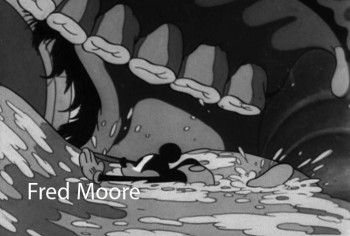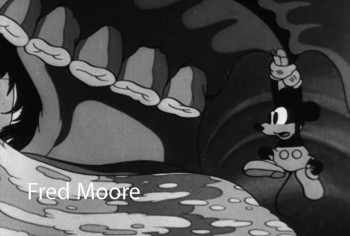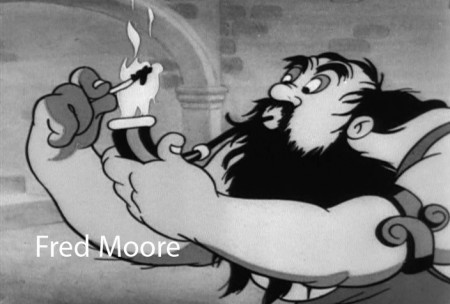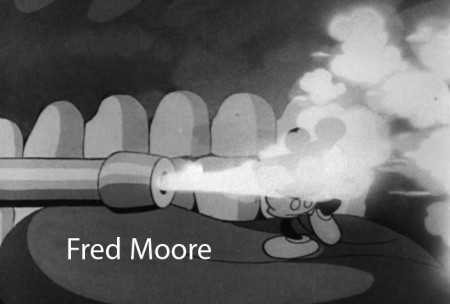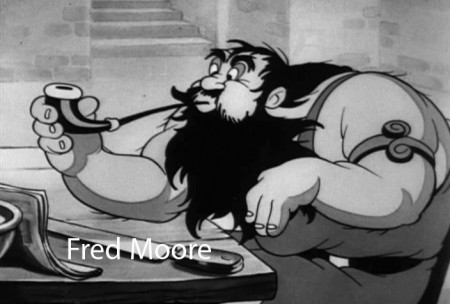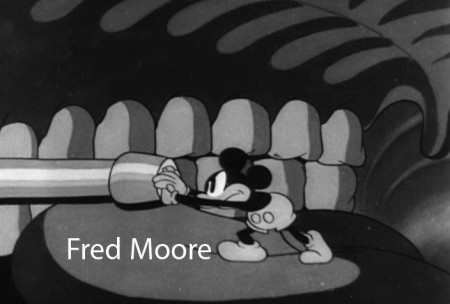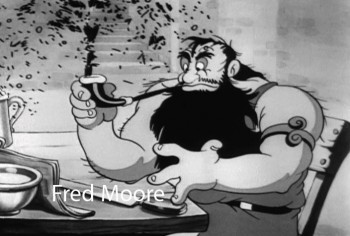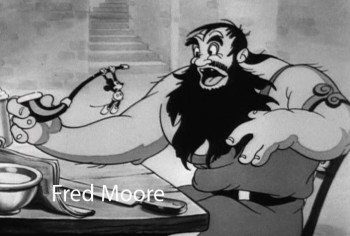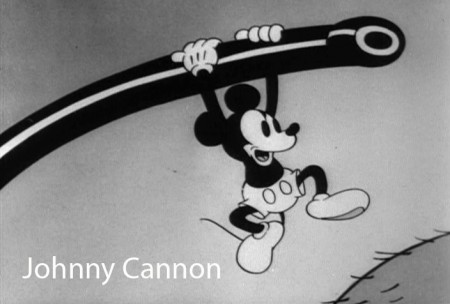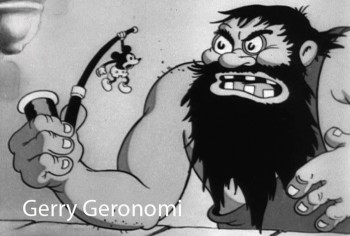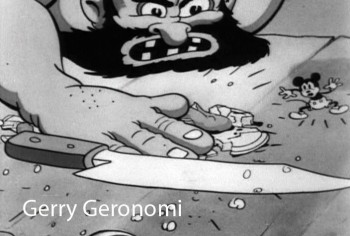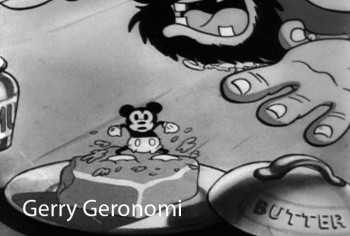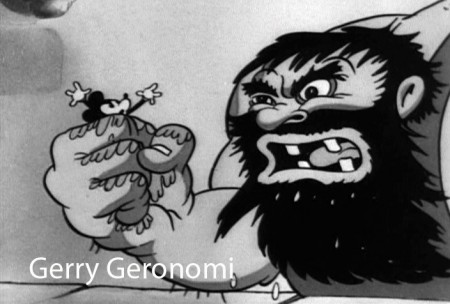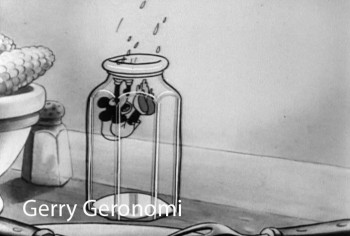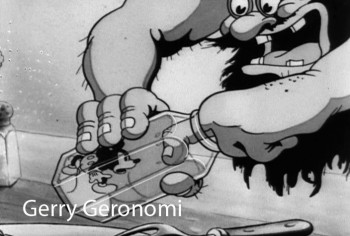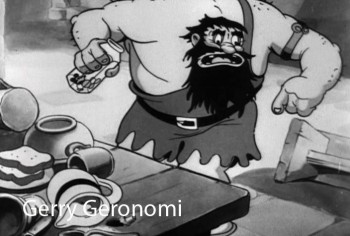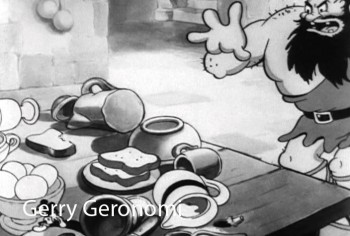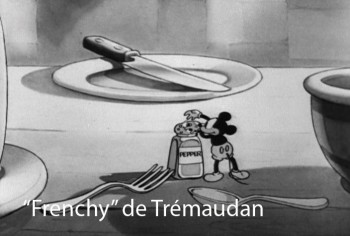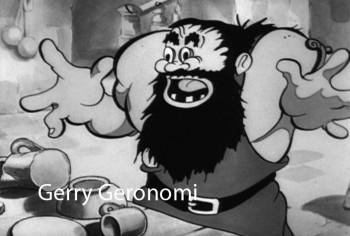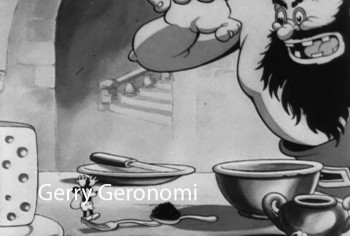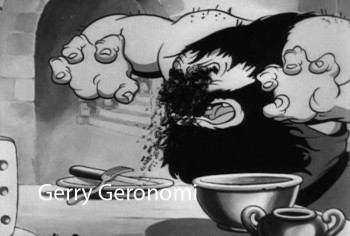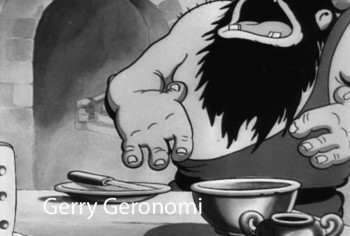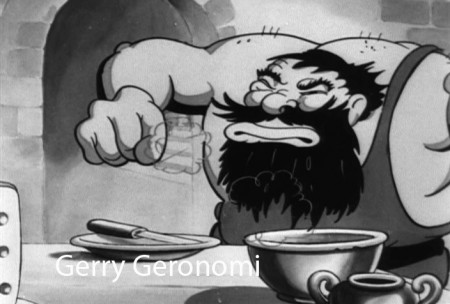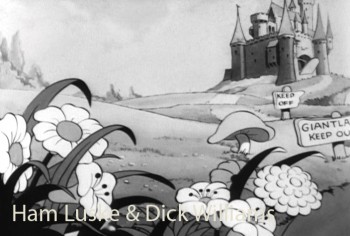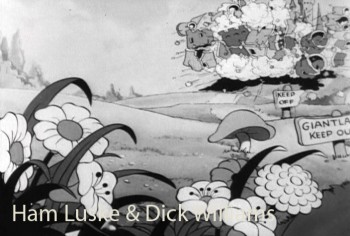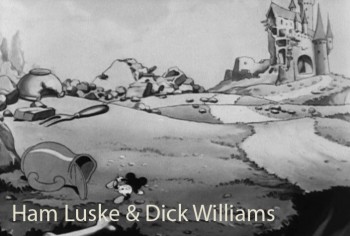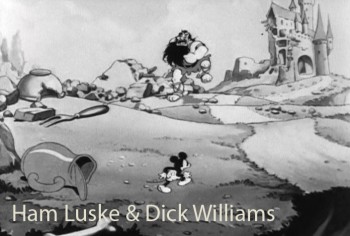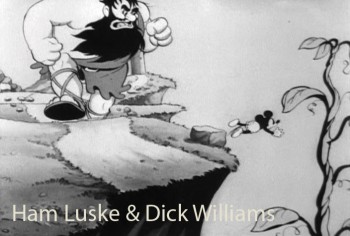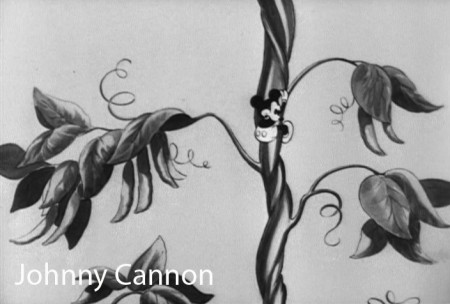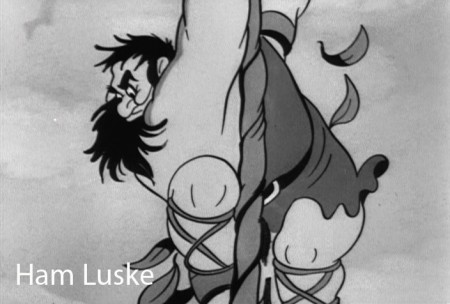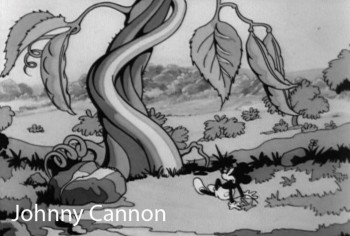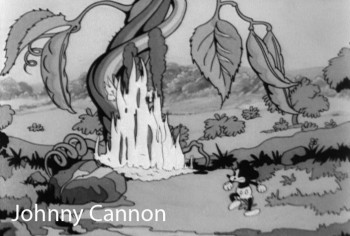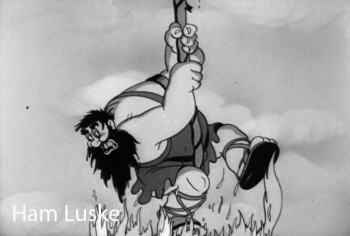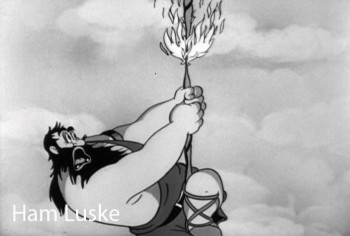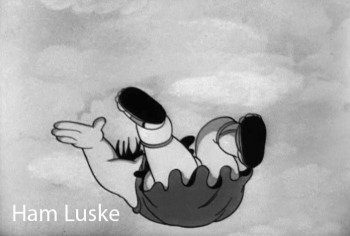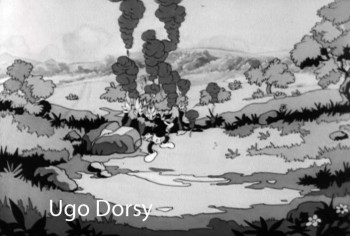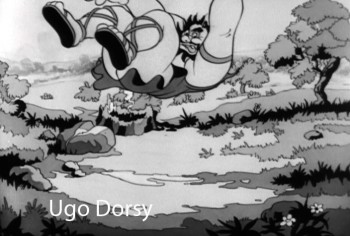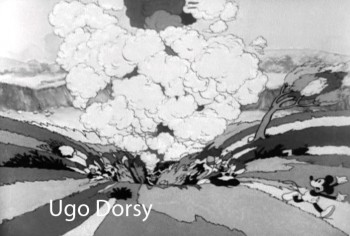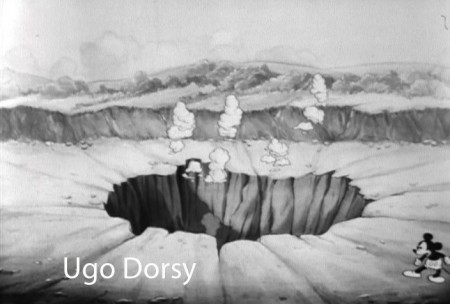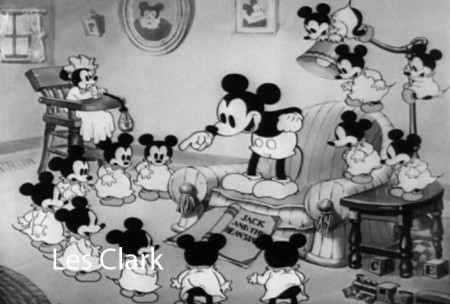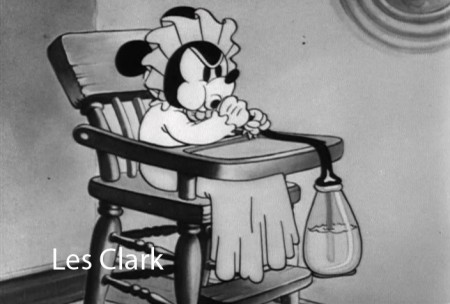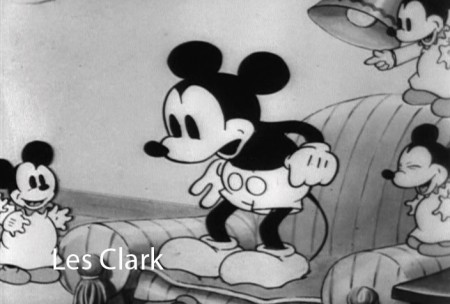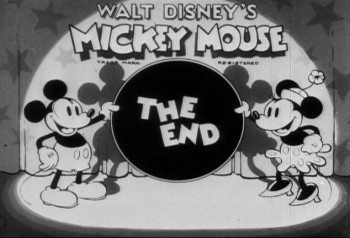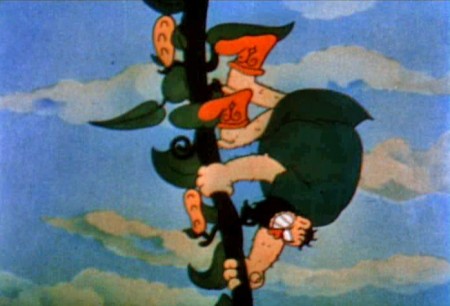Monthly ArchiveSeptember 2011
Books 20 Sep 2011 07:35 am
Overdue Book Review – Talking Animals
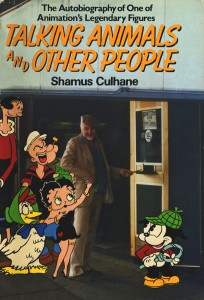 - Back in 1986, Shamus Culhane sent me a copy of his new autobiography, Talking Animals and Other People. I properly sent him a thank you note, and have to admit that I put the book aside and didn’t get to read it. All these years later, I have finally read it and thought I give some comments on the book.
- Back in 1986, Shamus Culhane sent me a copy of his new autobiography, Talking Animals and Other People. I properly sent him a thank you note, and have to admit that I put the book aside and didn’t get to read it. All these years later, I have finally read it and thought I give some comments on the book.
Shamus and I were never close. He always seemed, to me, so full of himself that I had a hard time getting past the image he tried to put across. It all climaxed with a serious argument we had when I was on the Executive Board of the animator’s u-nion, Local 841, in NY. Shamus was starting a studio in NY to produce the sequel to the show he had done in Italy, Noah’s Animals. This one was to be called King of the Beasts. He came to the Board to add an amendment to the contract. He felt that animators would work on a scene and quite often not heed the director’s instructions and incorrectly animate the scene. He wanted the right to ask for the scene to be reanimated at no charge. The Board, in asking questions about the proposal, seemed not too pleased with the idea. Somehow it came to an argument between me and Shamus, however civil,
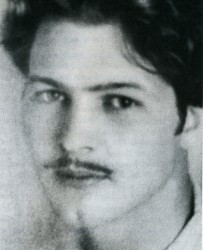 over this idea. I asked how many times was the animator to redo the scene for the Producer without getting paid; the notion seemed so Producer-sided that I couldn’t believe that Shamus was requesting this proviso. The Board voted it down.
over this idea. I asked how many times was the animator to redo the scene for the Producer without getting paid; the notion seemed so Producer-sided that I couldn’t believe that Shamus was requesting this proviso. The Board voted it down.
After that, Shamus wouldn’t talk to me again whenever we met in NY. He came to the Raggedy Ann studio several times that year but refused to say hello to me again. Oh, well. However, he did send me a copy of his book.
And I read it this past week. Finally.
I have to say it started Gangbusters for me. I just zipped on into the book and loved every second of it. Here was a guy who had lived through the early days of silent animation and continued working for some of the best. Bray, Fleischer, Iwerks, Van Buren and Disney 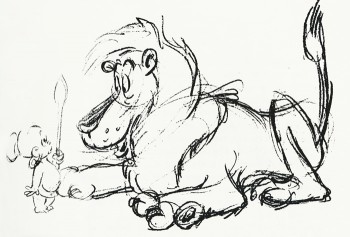 followed by animation for Jones and direction for Lantz before opening his own studio to make TV commercials and shows. After several years of success he went bankrupt, then he animated for Hubley and ran Paramount, finally producing a couple of odd one-off TV programs. The man had done just about everything. And it’s in the book.
followed by animation for Jones and direction for Lantz before opening his own studio to make TV commercials and shows. After several years of success he went bankrupt, then he animated for Hubley and ran Paramount, finally producing a couple of odd one-off TV programs. The man had done just about everything. And it’s in the book.
There’s a first-hand account of all these studios that, if nothing else, serves as strong corroboration about how those studios were run – in some detail. The reader rides along with Culhane, almost feeling as though you were there with him. His story is so well told and written that it almost reads like a rousing Mark Twain action yarn about early animation. It flows. Of course, it’s all from the POV of Culhane, so there may be some bias,
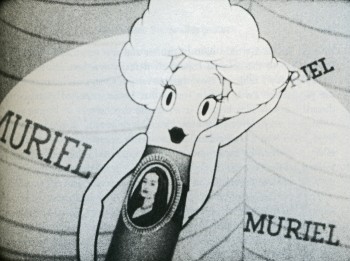 but, factually, the first half of the book seems pretty accurate. I can’t vouch for the second half when Culhane talks about his own studio. Some of the work at that studio included the Ajax elves, Around the World in 80 Days credits, the dancing Muriel Cigar, as well as Hemo the Magnificent and other Bell Science series shows. It’s an impressive list of credits, if you know any of the films.
but, factually, the first half of the book seems pretty accurate. I can’t vouch for the second half when Culhane talks about his own studio. Some of the work at that studio included the Ajax elves, Around the World in 80 Days credits, the dancing Muriel Cigar, as well as Hemo the Magnificent and other Bell Science series shows. It’s an impressive list of credits, if you know any of the films.
The first half of the book, through the Warner Bros. section, is just great. If you know any part of this animation history, this book will fill gaps you may have. Once I got to the Lantz section then through to the end of the book, Shamus Culhane’s ego entered and seemed to keep growing. Perhaps it’s a well deserved ego, but it did present something of a problem for me . . . a hiccup every time I stumbled over it.
But the book is eminently readable, and I heartily recommend it to everyone interested in animation. It’s not only informative but fun.
Commentary &Frame Grabs &Hubley 19 Sep 2011 07:23 am
Moonbird
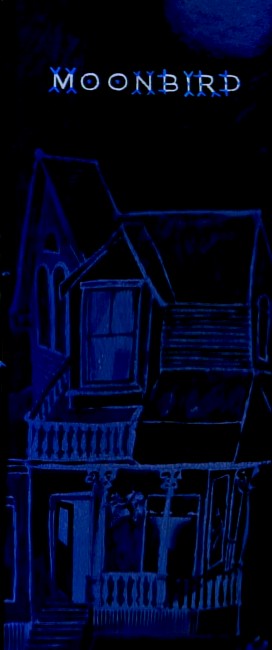
Opening title pan down- Moonbird
- In 1964, John and Faith Hubley‘s film, Of Stars and Men opened at the Beekman Theater in Manhattan. This was their first feature; it was accompanied by a number of their short films. I was in High School, and this is the first time I saw any of the Hubley films, and my life had changed at that screening.
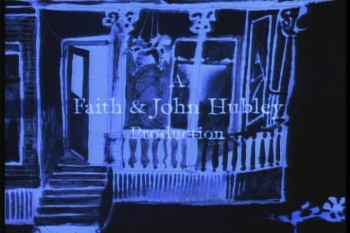 The flat colors of the Disney and Warner Bros cartoons were suddenly replaced with textures. It wasn’t only the backgrounds that had a texture; it was the characters as well. I’d already taught myself quite a bit about animation, but this was something new for me. I sat with saucer eyes watching every element and filmic device John Hubley came up with in creating these flms.
The flat colors of the Disney and Warner Bros cartoons were suddenly replaced with textures. It wasn’t only the backgrounds that had a texture; it was the characters as well. I’d already taught myself quite a bit about animation, but this was something new for me. I sat with saucer eyes watching every element and filmic device John Hubley came up with in creating these flms.
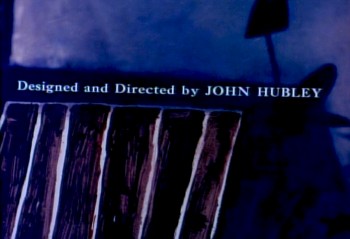 It was so clear that Hubley was using a system of double exposures, doubling the characters in at an exposure of about 60% so that the white paper would be somewhat translucent over the dark backgrounds. The rough pencil lines of the animators clearly delineated the characters in this technique, though they picked up some of color of the Bgs. Obviously, the white paper of the character had been painted black – up to the animator’s lines so that the extraneous parts of the paper was matted out. What a brilliant idea!
It was so clear that Hubley was using a system of double exposures, doubling the characters in at an exposure of about 60% so that the white paper would be somewhat translucent over the dark backgrounds. The rough pencil lines of the animators clearly delineated the characters in this technique, though they picked up some of color of the Bgs. Obviously, the white paper of the character had been painted black – up to the animator’s lines so that the extraneous parts of the paper was matted out. What a brilliant idea!
I explain this process in depth in this post from the past.
.
This enabled us, the audience, to see the rough lines of the animators and brought the same life the Xerox line had brought to 101 Dalmatians. It was thrilling for me.
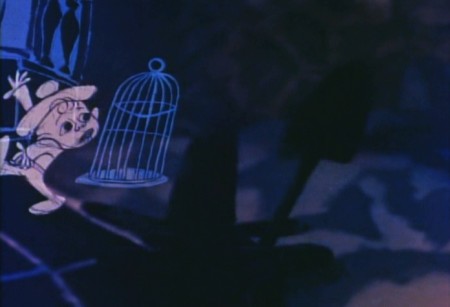
The sing-song muttering of a child introduces us to “Hampy”.
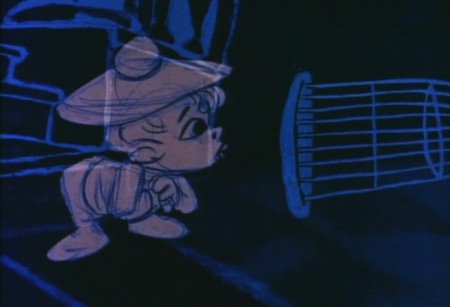
The rough lines of animator, Bobe Cannon, are a treat on the screen.

Every oil painting background beautiful, alive and modern.
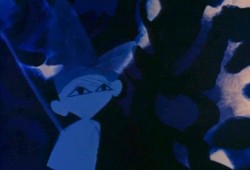
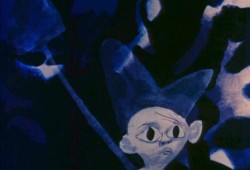
The other amazing thing was that the films used real dialogue.
It didn’t sound like a script. It was obviously, somehow, improvised.
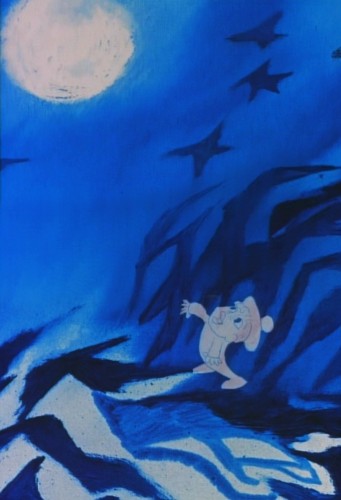
It took me a while to learn how this was done
and what a wonderful way they had of doing it.
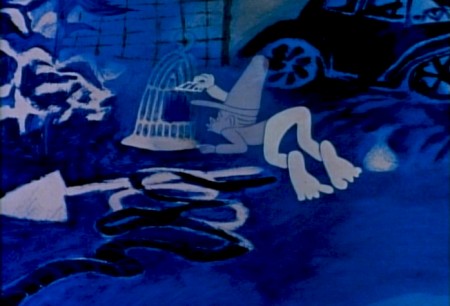
Moonbird was different from the other shorts of that period.
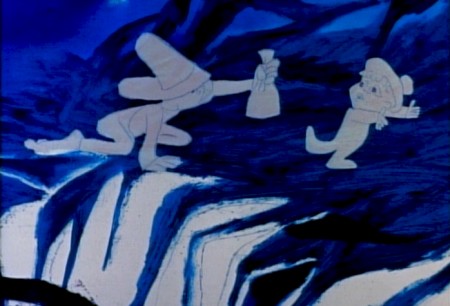
Its soundtrack was completely improvised by the
two boys of the Hubleys, Mark and Ray.
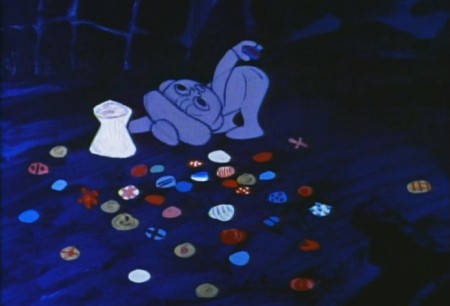
. . . but it also used NO music track.
This is very different for the Hubley films that had
such a devotion to the use of jazz on the soundtrack.
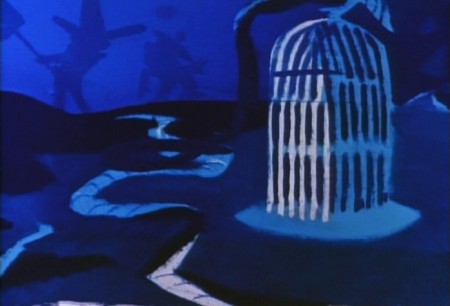
The film not only looked different for the time, 1959,
but it sounded different.

This film had clearly been the results of years of experimentation.
After all those brilliant UPA shorts, particularly Rooty Toot Toot.
The original Hubley produced shorts took a new, brilliant turn.
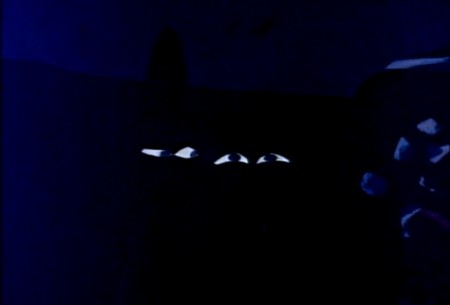
Adventures of an * moved animation forward
in its pursuit of 20th Century Art.
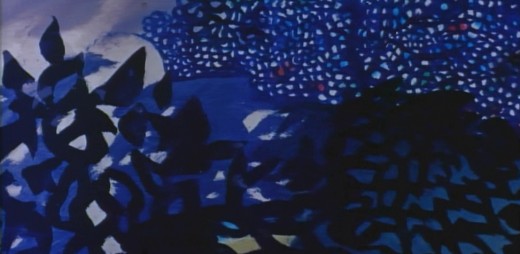
Picasso and Steinberg had been mimicked in the UPA films.
With Adventures of an * the Abstract Expressionists
came under the magnifying glass as John Hubley used
the New York school as his inspiration.
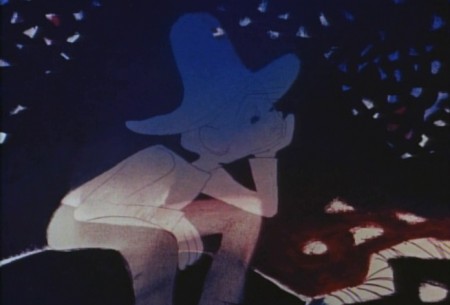
With Tender Game they moved that style into a more emotional
character animation, and by the time they did Moonbird, they
had settled into a very rich style that animation hadn’t noticed.
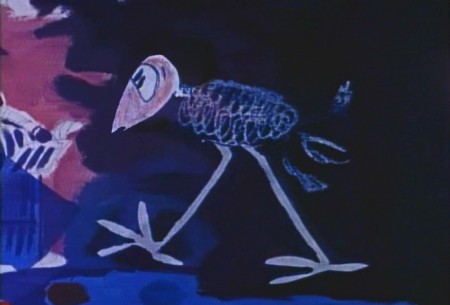
Two of animation’s finest animators delivered
the brilliant lyricism in this film.
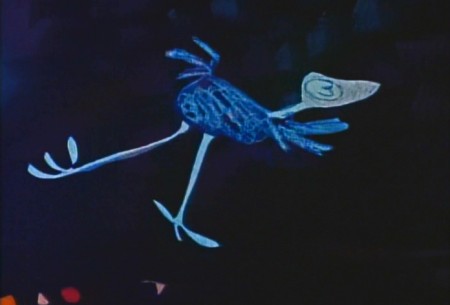
Bobe Cannon, for years, had delivered great animation.
His work with Chuck Jones had produced new and rich
experimental heights particularly in the 1942 short, The Dover Boys.
Hubley had stated that this film was an inspiration
in the move to 20th Century graphics in animation.
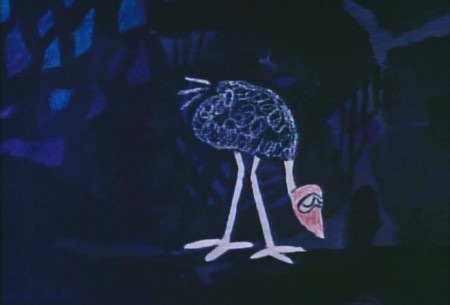
Cannon’s work with UPA, both directing and animating,
brought a new sense of poetry to the medium that finally
plays out in this film, Moonbird.
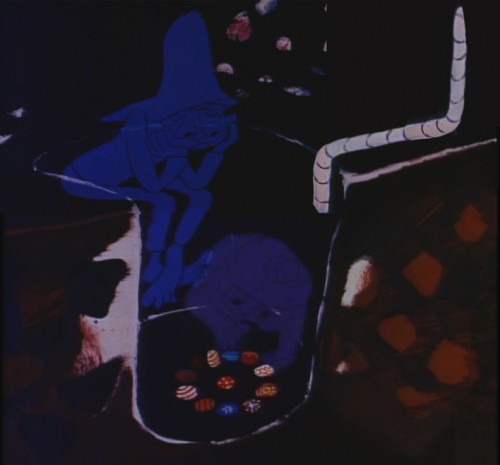
The young Ed Smith rose to great heights
while working for Hubley. His work on Tender Game
showed a natural warmth that spills over in this film.
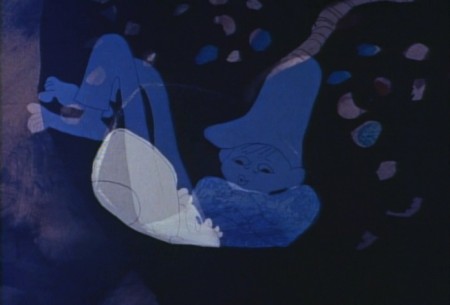
Animation, double exposures, oil painted Bgs,
improvised voices, no music all pushed this film
to the forefront of animation at the time.
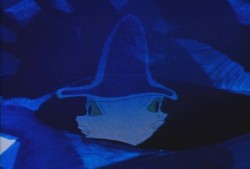
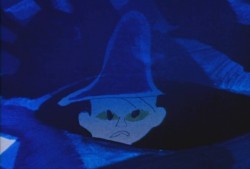
Despite the looseness of the style, it all blends
together as if it had been done by the one artist.
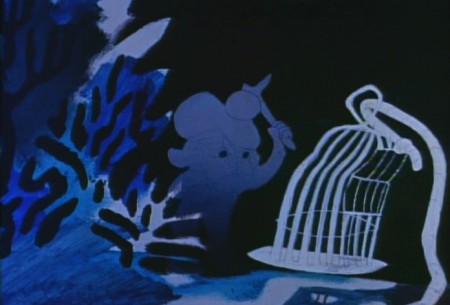
I love the soft airbrushed look Hubley was able
to pull off with much of this double-exposed artwork.
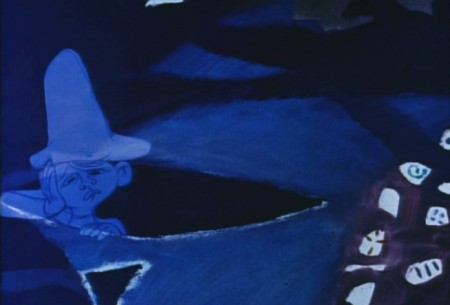
And yet the characters always remain front and center.
A tribute to the two animators and the directoral staging.
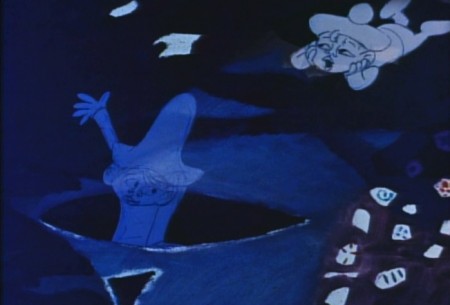
This delicate and lyrical film was followed by an anmiated
discussion of nuclear warfare and armament. The Hole
was twice the length and had a political point to make.
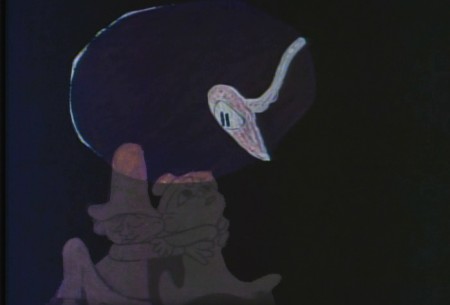
The characters’ colors change and fluctuate and sparkle
even as scenes progress, but this all becomes part of
the style which the Hubleys pursued for
the rest of their filmmaking life.
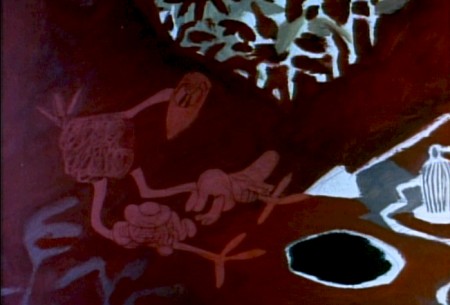
As in Moonbird, the voices in The Hole were improvised
. . . but this time by adults, Dizzy Gillespie and George Mathews.
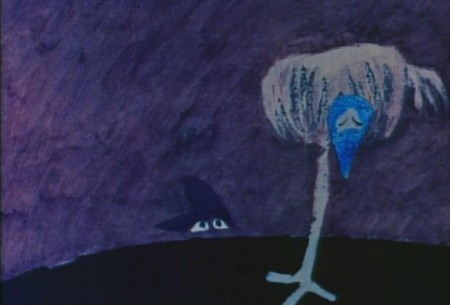
The Hubleys took their process of improvisation to a new level.
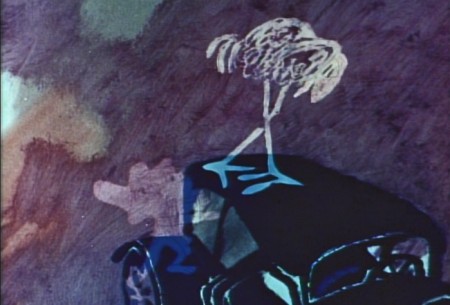
In the end, animation grew up, once upon a time.

The question is whether we’ve squandered that development
and have retrogressed to the 19th Century illustration styles
that Disney pursued. Recently, we seem to have had only
bad drawing or cgi puppets to choose from.
Time to step up, ladies and gentlemen.
Photos &Steve Fisher 18 Sep 2011 07:03 am
Textured Buildings
- The following first eight photos were sent to me by Steve Fisher. At first I thought there was a religious undercurrent to all of the photos, but then I realized they weren’t. But they felt connected. Steve tells me that the only real connection is that they were situated near each other. Within a few blocks he had photographed all of them. Yet, that religious feel still is there for me.
Steve had sent me the last four photos earlier, and I made the connection.
 1
1
 2
2
Blue-tile roof of residential building on Parsons Blvd.
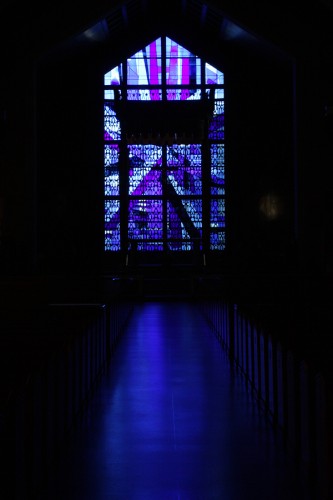 4
4
Blue stain-glass interior of the Mary Nativity
Roman Catholic Church on Parsons Blvd.
 7
7
Domed Russian Orthodox church
on 147th Street and Cherry Avenue.
 8
8
Brick chimney at Oak Avenue and Parsons Blvd.
 10
10
Another tree that fell victim to Hurricane Irene.
Many thanks to Steven Fisher for the photos.
Articles on Animation &Commentary &Illustration 17 Sep 2011 06:52 am
Tributes
- This past week, Yowp, the excellent site devoted to Hanna-Barbera’s early product, offered a fine piece on Arnold Stang. After reading it, I thought it worth telling about my one contact with Mr. Stang.
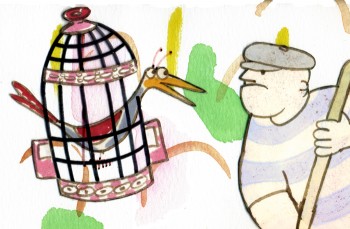 I was about to do my first half-hour show for HBO. It was a musical version of the Bernard Waber children’s book, LYLE LYLE CROCODILE. Charles Strouse had written some fine songs, and I cast them with auditions. The two people who made it through without auditions were: Charles Strouse, himself, in the bit singing role as a moving man. He had a small part of the chorus in the opening song. _____________Arnold and Charles’ characters sing together.
I was about to do my first half-hour show for HBO. It was a musical version of the Bernard Waber children’s book, LYLE LYLE CROCODILE. Charles Strouse had written some fine songs, and I cast them with auditions. The two people who made it through without auditions were: Charles Strouse, himself, in the bit singing role as a moving man. He had a small part of the chorus in the opening song. _____________Arnold and Charles’ characters sing together.
Arnold Stang was cast as a bird
owned by the family. I couldn’t help myself; I had to bring in the guy who was a key part of 50 & 60s animation history – at least for my own amusement.
Arnold had to squawk a number of times, speak a few scratchy lines, and sing a couple of lines in the opening song as he, the bird, is moved into the House on East 88th Street. When we recorded Arnold singing, it was to a temp track of the music. The engineer, Strouse and I sat in the control booth with Arnold in the large recording booth.
He sang the lines. I was excited and pleased and felt he’d gotten it on the first take.
Charles Strouse said otherwise and asked for them to be redone.
The same results; I knew they were great, Charles was annoyed about them, and he made the mistake of going over me, the director, to punching the button to talk to Arnold in the booth. The two of them got into a shouting match over the ridiculous. Charles wanted Arnold to sound more like a bird. Arnold kept pointing out that he wasn’t a bird and such birds don’t talk, never mind sing. He also pointed out that he played a cat and dog and many other types of animals, but he was always a human, not an animal.
With every jab, Charles Strouse came back with another. The two of them were screaming, and I finally had to stop it. I took the button from Charles’ hand and asked Arnold to excuse us while we discussed it in the control room. From that point on, Arnold couldn’t hear us as I told Charles that he was being ridiculous and Arnold had been doing a good job. He backed off (hopefully realizing what a jerk he’d become.) However, now Charles had gotten the talent upset and he was supposed to perform under such stressful conditions. It was very unprofessional of Charles, and equally so that he thought he could take charge of the recording session. I was the director and would make all decisions from then on, and only I was allowed to speak to the performer, Arnold.
Charles yielded. What else could he do. I asked Arnold if he could step back to the beginning and try to smooth his feathers and do it one more time for me. He agreed, did a great job, and I thanked him for his help.
In fact, it did turn out great. Arnold brought a nice and funny character to the bird. Which was a minor part and not worth an argument.
Years later, for a special Birthday I had coming up, Heidi wanted to throw a surprise party. She invited Arnold, and he left a wonderful message on her machine thanking her but not able to attend. She still has that recording and it’s pretty cute. Arnold speaking in his natural voice sounding so positive and lovely.
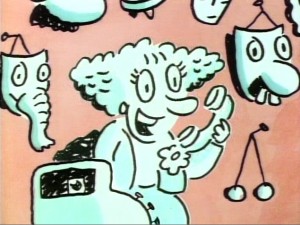 - J.J. Sedelmaier has started a new column for Imprint Magazine. Imprint is, basically, the blog for Print Magazine. You’ll remember that John Canemaker had a year’s worth of excellent and diverse columns there, and Steven Heller continues to write some very smart pieces. Just look at the announcement about Pablo Ferro which leads to this great, recent bio of the designer.
- J.J. Sedelmaier has started a new column for Imprint Magazine. Imprint is, basically, the blog for Print Magazine. You’ll remember that John Canemaker had a year’s worth of excellent and diverse columns there, and Steven Heller continues to write some very smart pieces. Just look at the announcement about Pablo Ferro which leads to this great, recent bio of the designer.
But, back to J.J. Sedelmaier’s piece on Gary Baseman. It’s a wonderfully illustrated piece with lots of artwork from Mr. Baseman. A wonderful illustrator, he has been working for years in animation thanks to both R.O.Blechman and J.J.’s studios. He also did a fine series for Disney with “Teacher’s Pet.”
J.J. shows how they achieved his painterly style, in a commercial his studio produced, using the cels. It’s a good article and something to look forward to monthly.
.
- Illostribute is a blog devoted to the art of Illustration. They currently have a tribute to Mary Blair, which seems to have pulled many of her gorgeous illustrations from the Canemaker book, The Art and Flair of Mary Blair. (This book is a beauty and should be owned by everyone in animation.)
It’s a curious site in that they seem to post illustrations inspired by the featured artist; this they do on the Mary Blair feature. There are several older posts I found interesting. It was nice, for example, to see some paintings by Jack Levine and be reminded of his great work.
Bill Peckmann &Comic Art 16 Sep 2011 07:04 am
Toth’s “Wings of Eagles” – 2
The Wings of Eagles was a 1957 Action Adventure film directed by John Ford, starring John Wayne and Maureen O’Hara. Try to get it on Netflix; it’s one of Ford’s classics. Alex Toth was hired by Dell to create the comic version of the film. Bill Peckmann not only saved his copy of the comic but sent a copy to me to post. It’s classic Toth. Part 1 appeared here.
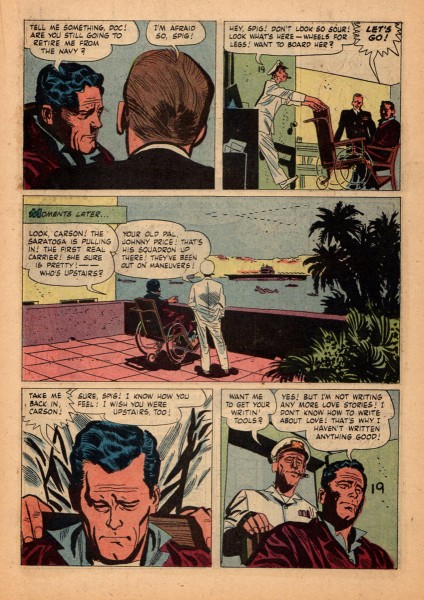 17
17
As a special treat, Bill Peckmann added these five pages of Doodles by Alex Toth.
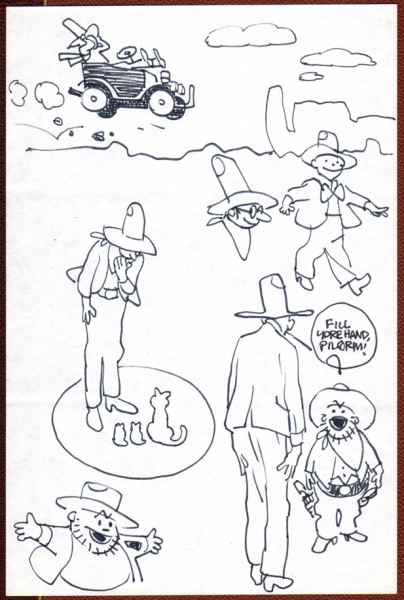 1
1
Many thanks to Bill Peckmann for sharing these rare bits with us.
Bill Peckmann &Comic Art &Disney 15 Sep 2011 06:55 am
Luck of the North – Part 3
- We’ve come to the end of the posting of the great Carl Barks story, Luck of the North. Bill Peckmann, has been so kind as to send these scans on to us to post. We’ll finish with the newly recolored version of the story complete with airbrushed backgrounds. However, because of the complaints about this version – particularly in regard to the airbrushed backgrounds – we’re showing some of the other versions of the first of the pages in this section. We’ll start with these originals.
Let’s start with the cover. First, I’ll repost the background I’ve shown in the past. Following this is the newer version done for the Gladstone Giant reprint.
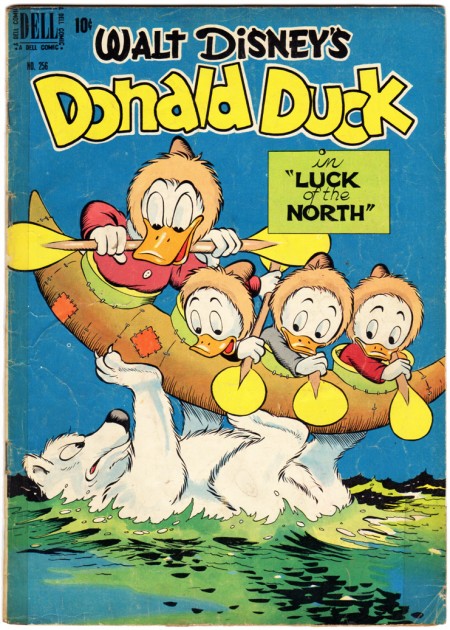
The original comic cover.
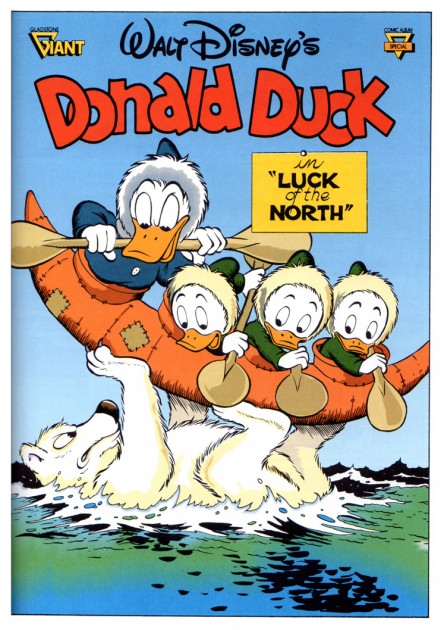
Bill Peckman wrote: This is the cover of the Gladstone Giant reprint, Nicely done.

B.P. wrote: With the Part 1 commentary about
original color printing vs. reprint color vs. a black and white print job,
I figured we could open with the first page of Part 3 shown in three versions.
Here’s the B&W page.
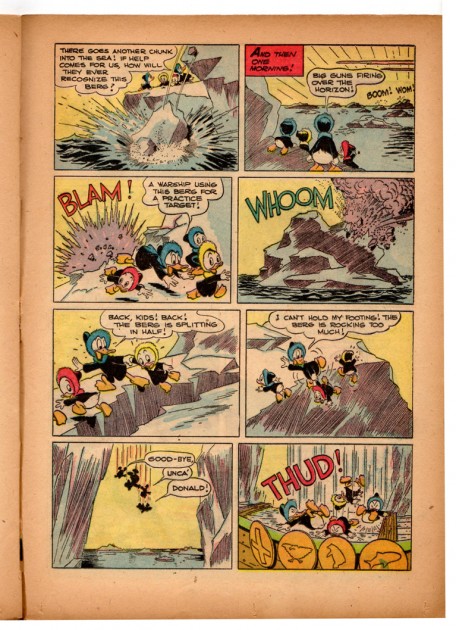
This is the original comic book.
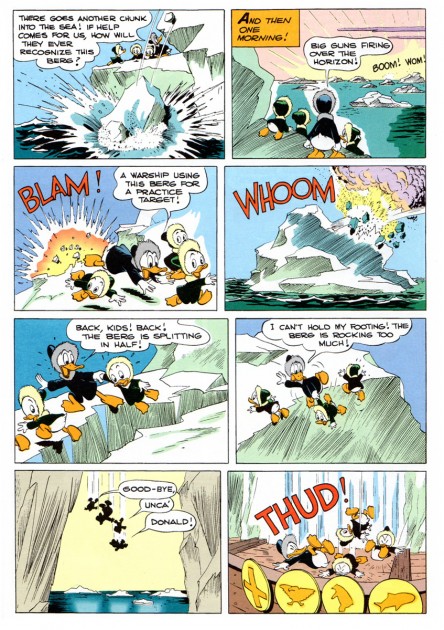 23
23
This is the Gladstone Giant reprinted page
followed by the remainder of the story.
B.P. writes: One of the best reasons for getting the Gladstone reprints was the excellent and knowledgeable running editorial commentary by Geoffrey Blum in each Barks issue.
Only right that it should be included here.
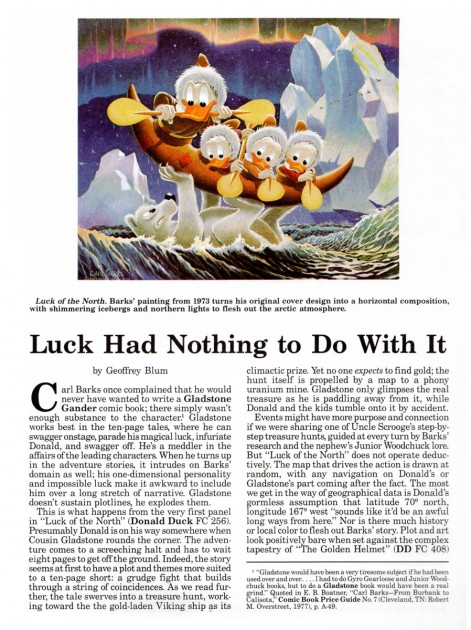 1
1
B.P. writes: Here are the endpaper and back cover gags from the original comic book.
(Sorry about my blue rubber stamping but even as kids we knew that these books were pure golden treasure!)
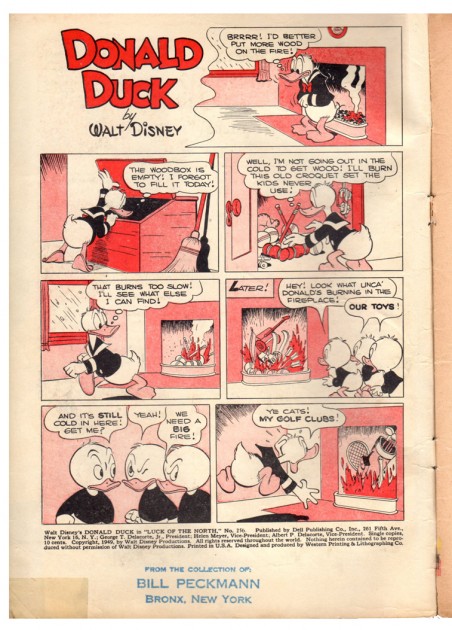 1
1
You can find the first two parts here: Part 1 & Part 2.
Animation &Animation Artifacts &Hubley &Tissa David 14 Sep 2011 06:51 am
Carousel’s Lovers – recap
This is one of my favorite sequences in the Hubley canon. Animated by Tissa David.
It’s worth a repost: the original appeared here in June, 2009.
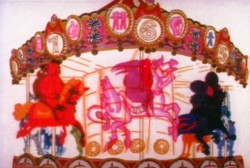 - Let’s take a look at the scene in Hubley’s Everybody Rides the Carouselwherein the young lovers have had a spat and try to have a romantic scene despite the fact that neither of them wants to do that.
- Let’s take a look at the scene in Hubley’s Everybody Rides the Carouselwherein the young lovers have had a spat and try to have a romantic scene despite the fact that neither of them wants to do that.
They’ve argued over the girl having cut her hair without telling the boy. He’s annoyed and she laughs at him. They push on to a frothy conversation. Both put on masks to continue the conversation while the inner characters
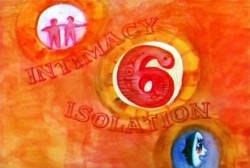 are annoyed and have an inner monologue. They get to the point where they can’t take the masks off and end pulling away from each other.
are annoyed and have an inner monologue. They get to the point where they can’t take the masks off and end pulling away from each other.
I’ve gathered John Hubley‘s layouts for this sequence. Tissa David animated them. You’ll note that the pencil numbers are a scene breakdown done in Tissa’s handwriting. The very loose drawings were done with a sharpie or pencil. The pencils would have been done while in handing it to Tissa during the conversation. They’re to delineate some point in greater detail for her.
I’ve also pulled some frame grabs so you can see how it was finally rendered. The coloring was done on vellum and shot bottom light. No more than 3 levels were used (including the background.) Tissa, aside from concerning herself with the dramatics of the scene, had to watch that the characters didn’t overlap. More complication for her.
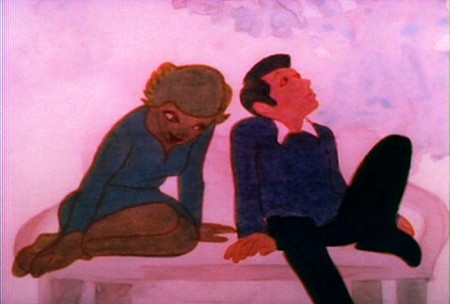
(Click any image to enlarge.)
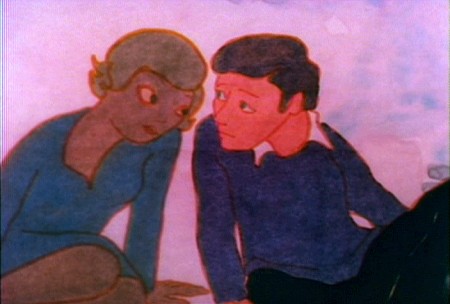
By the way, this was Meryl Streep’s first screen performance.
Charles Levin, another NY character actor, played the boy.
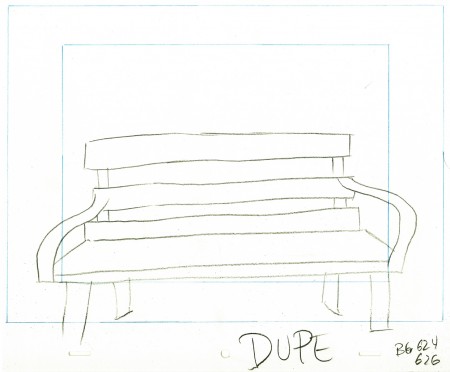
Here’s the park bench.
A quick rough copy by me to Tissa of John’s Bg LO.
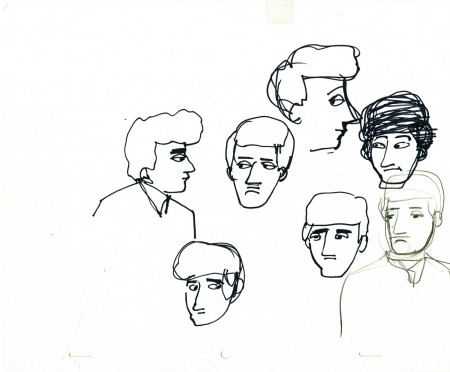
John’s model of the boy’s head for Tissa.
Articles on Animation &Disney &Music 13 Sep 2011 06:39 am
Bambi’s Music – recap
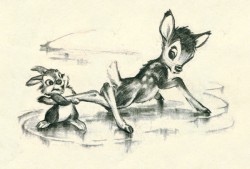 - I first met Ross Care years ago. He had scored the music to one of John Canemaker‘s early short films, The Wizard’s Son. I was impressed, and since I was looking for a composer for the first film of my new company, Byron Blackbear & The Scientific Method, I asked Ross for his help. He did a great job with little time and less money.
- I first met Ross Care years ago. He had scored the music to one of John Canemaker‘s early short films, The Wizard’s Son. I was impressed, and since I was looking for a composer for the first film of my new company, Byron Blackbear & The Scientific Method, I asked Ross for his help. He did a great job with little time and less money.
It was only a short time later, that I learned that Ross was an animation music historian. Somehow, we worked together in setting up a program for ASIFA East in which the conductor for Bambi, Alexander Steinert, took the stage with Ross to analyze the music for that film. I had a 16mm print of the film, and we watched about half of it. It was one of those memorable ASIFA meetings, that stay with you forever.
A year or two later, Ross had written an extensive article on Bambi’s music for The Quarterly Journal of The Library of Congress, the Spring 1983 edition. I just recently ran into the article on my shelves, and after getting Ross’ permission, I’m posting that article here.
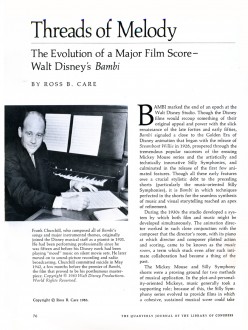 _
_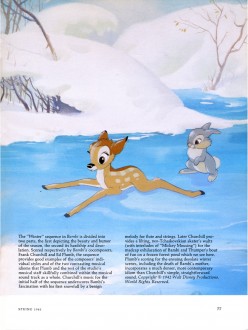 2
2___________(Click any image to enlarge to a readable size.)
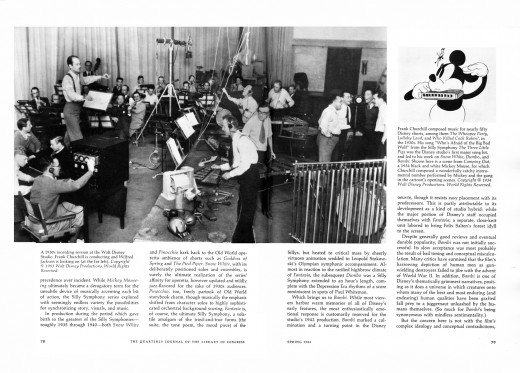 4
_
4
_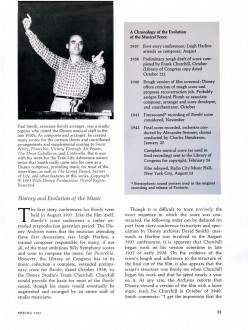 6
6
Article: Copyright © 1983 Ross B. Care
Animation &Disney &Frame Grabs 12 Sep 2011 06:34 am
Giantland
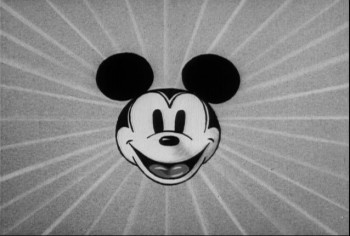 - For the past couple of weeks, Hans Perk at A Film LA has featured the animator drafts for the Disney short, Giantland. I’ve taken the opportunity to pull some frame grabs and label the animator for each particular scene. The original drafts have the film titled at “Mickey and the Giant.”
- For the past couple of weeks, Hans Perk at A Film LA has featured the animator drafts for the Disney short, Giantland. I’ve taken the opportunity to pull some frame grabs and label the animator for each particular scene. The original drafts have the film titled at “Mickey and the Giant.”
The film was directed by Burt Gillett and released on 11/25/1933.
The animation was by Les Clark, Cy Young, Johnny Cannon, Dick Huemer, Ham Luske (one scene with Dick W[illiams]), Bill Roberts, Fred Moore, Gerry Geronimi, Gilles Armand “Frenchy” de Trémaudan, Ben Sharpsteen, and Ugo D’Orsy.
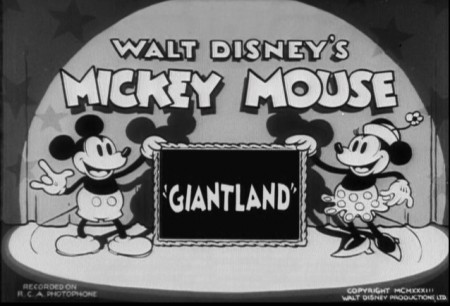
Here’s the YouTube version:
_________________
The Ub Iwerks short, “Jack and the Beanstalk” is interesting in that Castle Films distributed the 8mm & 16mm home movie versions of the short duriing the 50s and 60s. This allowed the Iwerks film to be more familiar to many people today. I actually studied the film frame-by-frame dozens of times when I was a kid. I got to tell Grim Natwick that his was the first animation I ever really studied.
The film had many similarities, but the approach was very different. By this time, the Disney studio was trying to improve themselves. Cartoon fantasy such as buzzing saws, representing sleep, and the tips of shoes opening to reveal smelly toes, would not be part of the Disney approach. There was more realism, hence better acting, in the Disney shorts. Iwerks hung fast to the fantasy, just as the Fleischer films did so into the late 30s.
The Iwerks film was in color (albeit Cinecolor.)
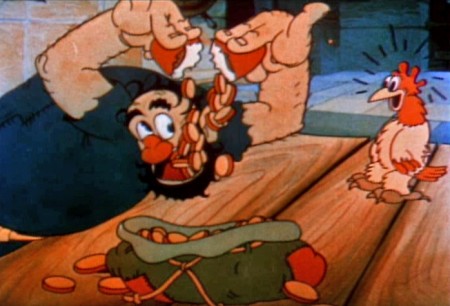
It’s amazing how similar yet very different the Iwerks short,
Jack & the Beanstalk is. The Disney studio seems to have
gone for a more realistic approach, while the Iwerks’ team
delved more into the cartoon fantasy of the animation.
Photos &Steve Fisher 11 Sep 2011 07:37 am
9/11
- I remember that on 9/11 everyone had to be out on the street as long as possible looking toward the empty space in the downtown sky. And no one talked. There was a hushed silence over the city.



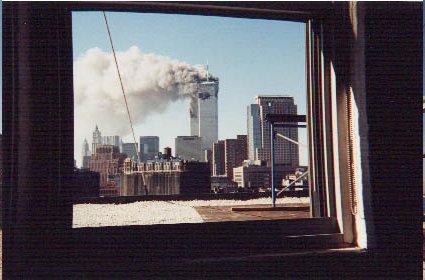


All pictures shot by Steve Fisher. The Towers burning
were shot with a disposable camera from a nearby office.
.
